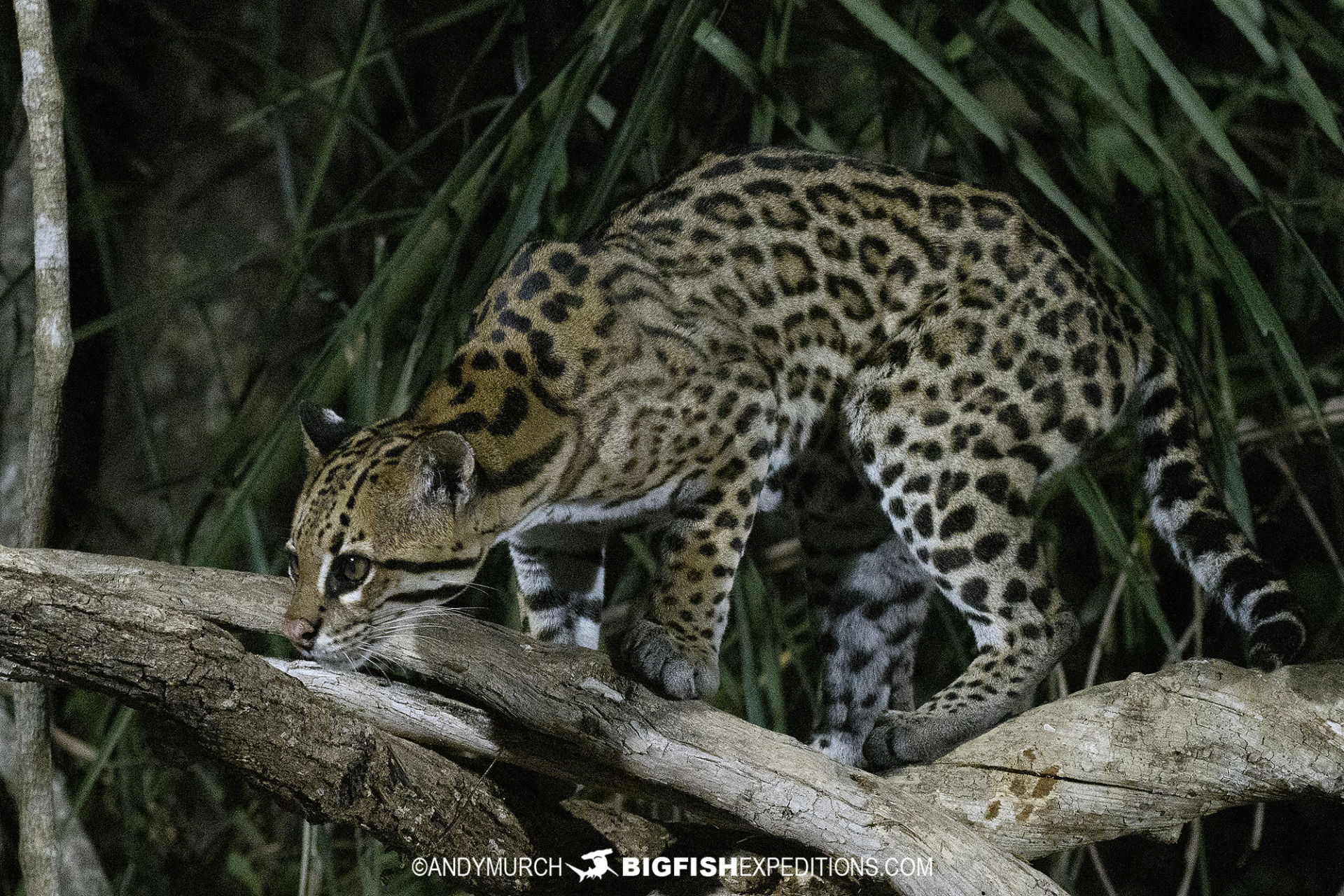A Big Fish Expeditions Trip Report
By BFE Trip Leader Andy Murch
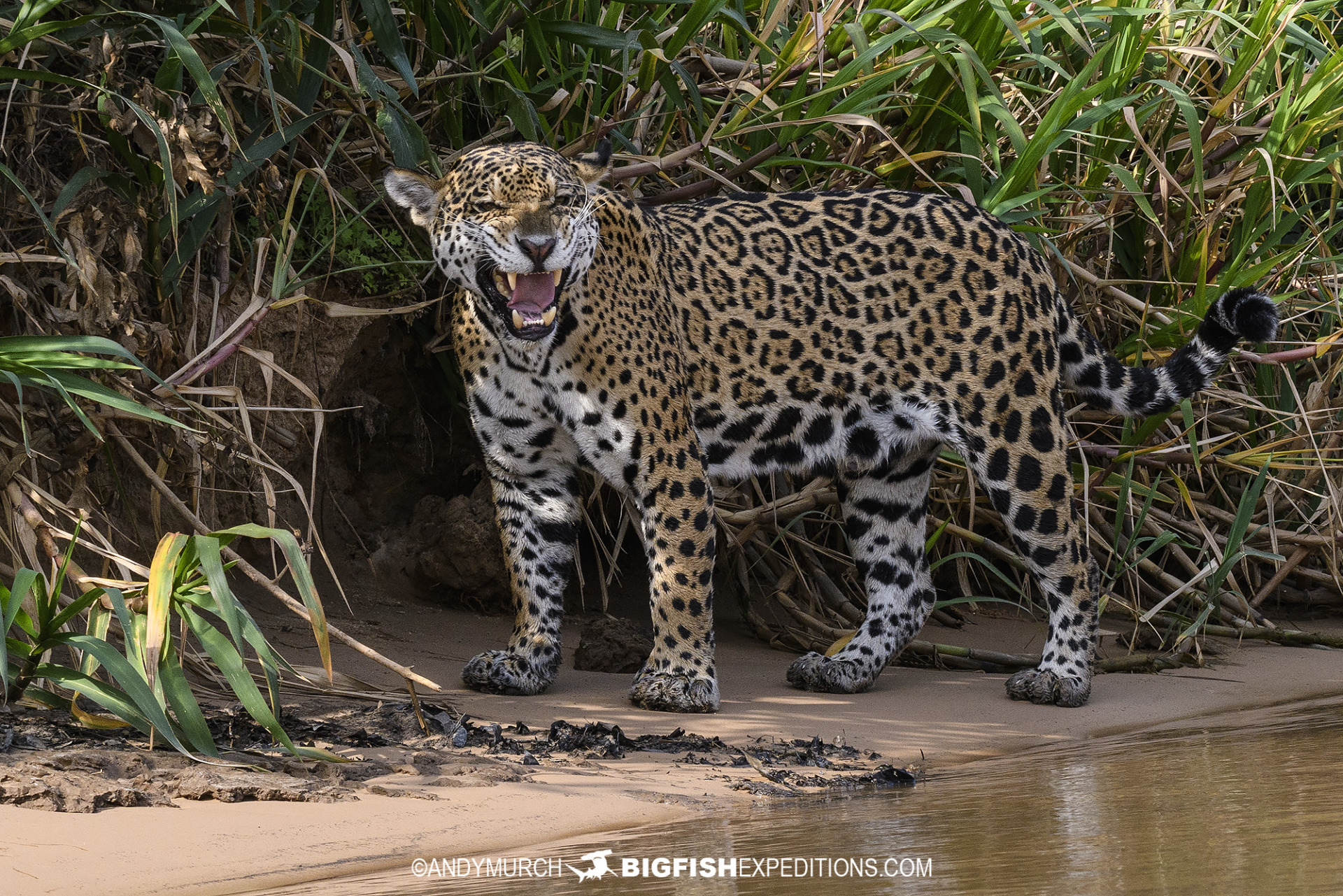
Jaguar and Ocelot Photography Tour 2022
In a nutshell: Mind-blowing Jaguar and Ocelot Encounters! The Pantanal was everything our guests hoped it would be. Our ocelot encounter was world class, and and our Jaguar sightings lasted for hours every day, but even if we had not seen the stars of the show, the other wildlife in the Pantanal was so abundant and varied that it would have been an amazing trip anyway.
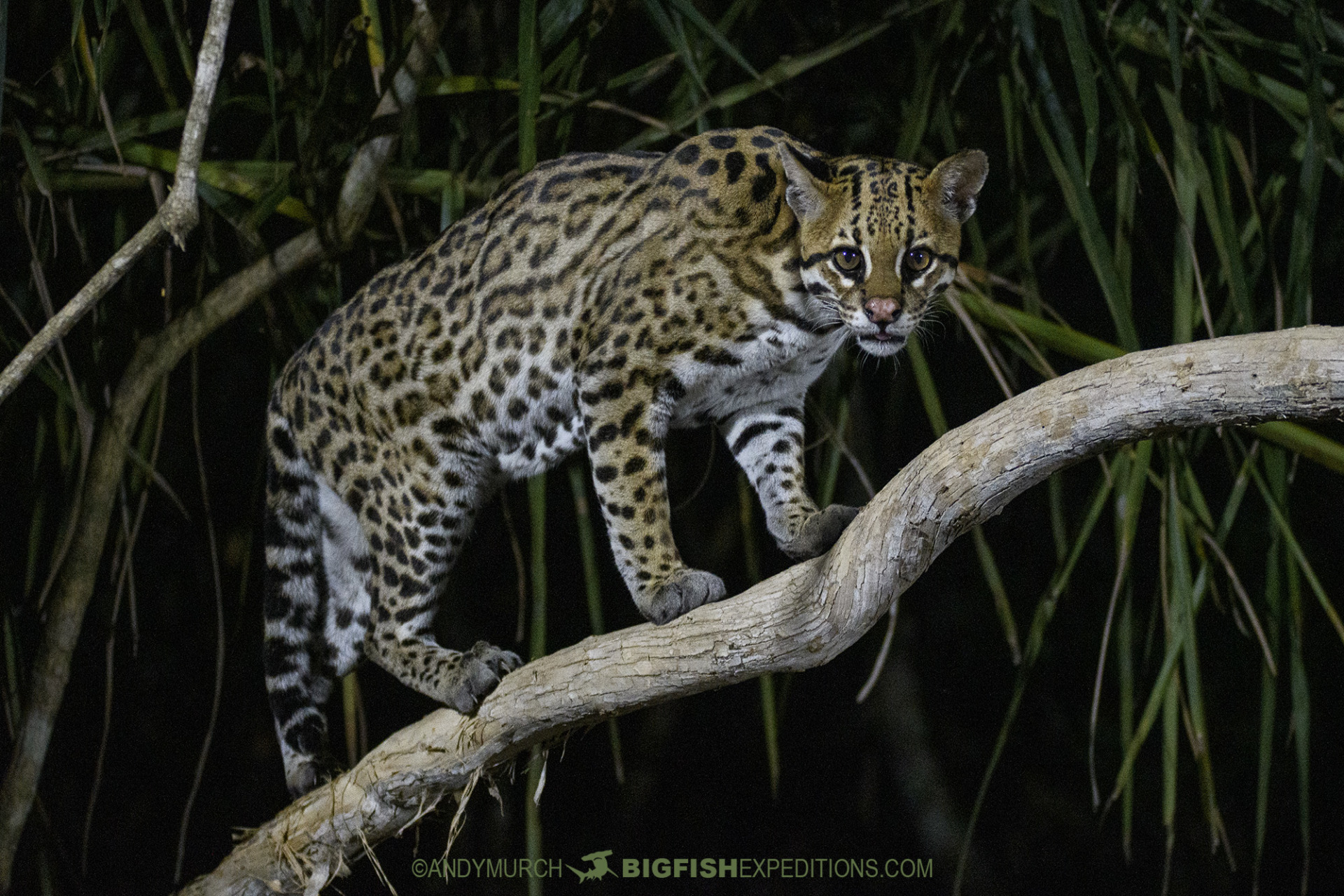
A stroll through the Pantanal
After a short journey south from Cuiaba Airport into the heart of the Pantanal, we settled into our lodge and excitedly prepared cameras in anticipation of the day ahead. The next morning we awoke before dawn, and took a walk through the grasslands surrounding the lodge.
By the time the sun peeked over the horizon, we had already seen enough birds to fill a guidebook, but the highlight of the walk were the crab eating foxes which are common in this part of Brazil and easy to approach.
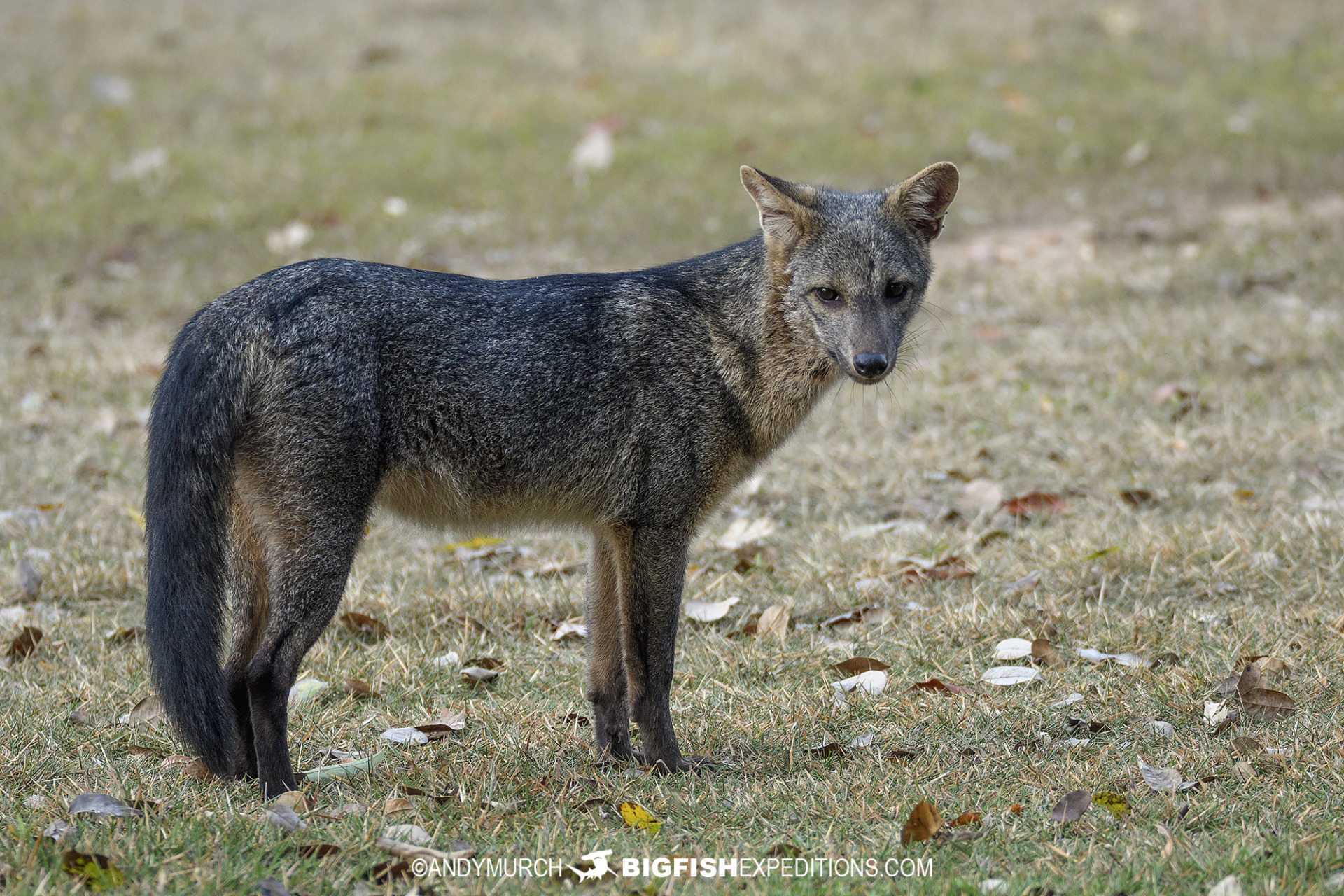
Fantastic Birdlife
When we returned to the lodge it was time for breakfast, but the grounds were filled with colourful birds – including scores of Yellow-Billed Cardinals, parakeets, and many other beautiful species – so it was hard to tear ourselves away from the photography opportunities. However, we new there was lots more to see today, so we wolfed down a delicious cooked breakfast and headed for the river.
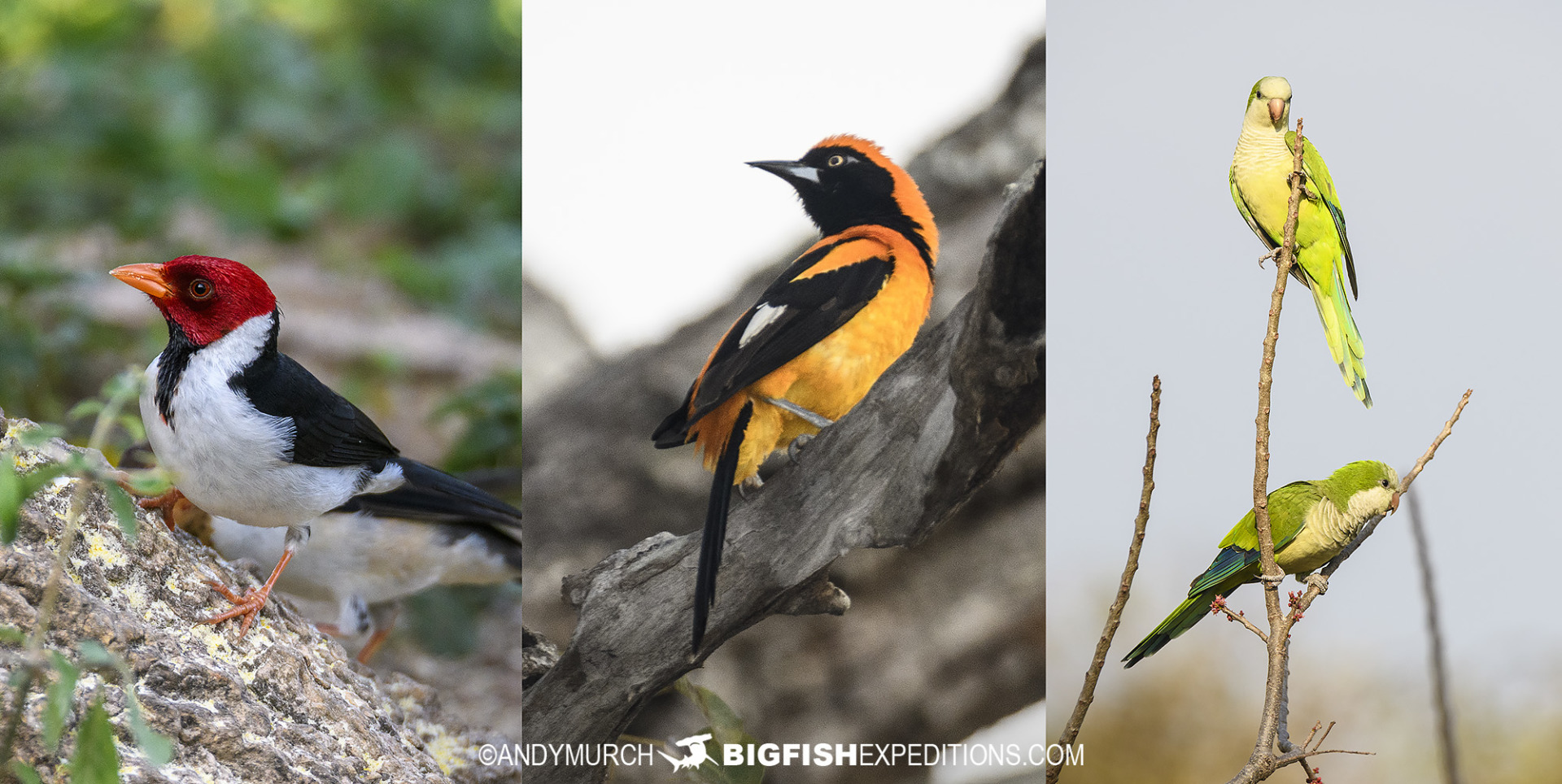
Yacare Caimans
For the next two hours, we cruised the river photographing monkeys, birds, and hundreds of Yacare Caiman that lined the banks wherever there was room.
Caiman are the primary food source of jaguars in the Pantanal and there were probably jaguars in the area but we would not transfer to our jaguar lodge until the following day. Today we could just enjoy the Pantanal, and concentrate on photographing the Pantanal’s other iconic species.
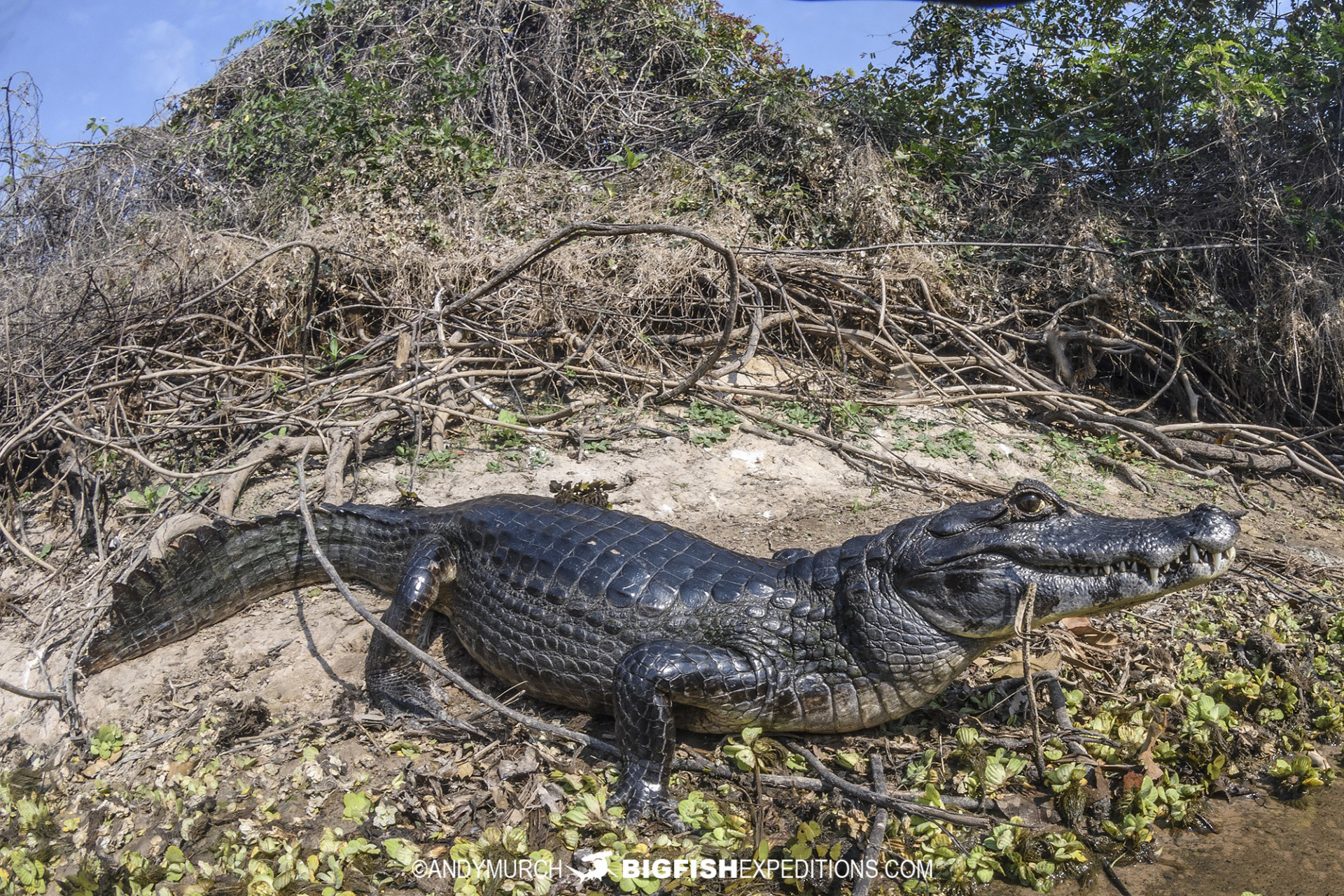
Birds on the river
Even the non-birders in our group were impressed by the sheer size of the Jabiru storks that fished in the shallows. This enormous species can have a wingspan of 2.8m or 9.2ft, and like everything else that we encountered in the Pantanal, it was very easy to get close to.
Kingfishers were everywhere; swooping down to catch fish or posing in colourful trees.
Raptors abounded. Within a few minutes of leaving the dock, we saw five species of hawks including numerous black collared hawks which i.m.o. are one of the most most attractive.
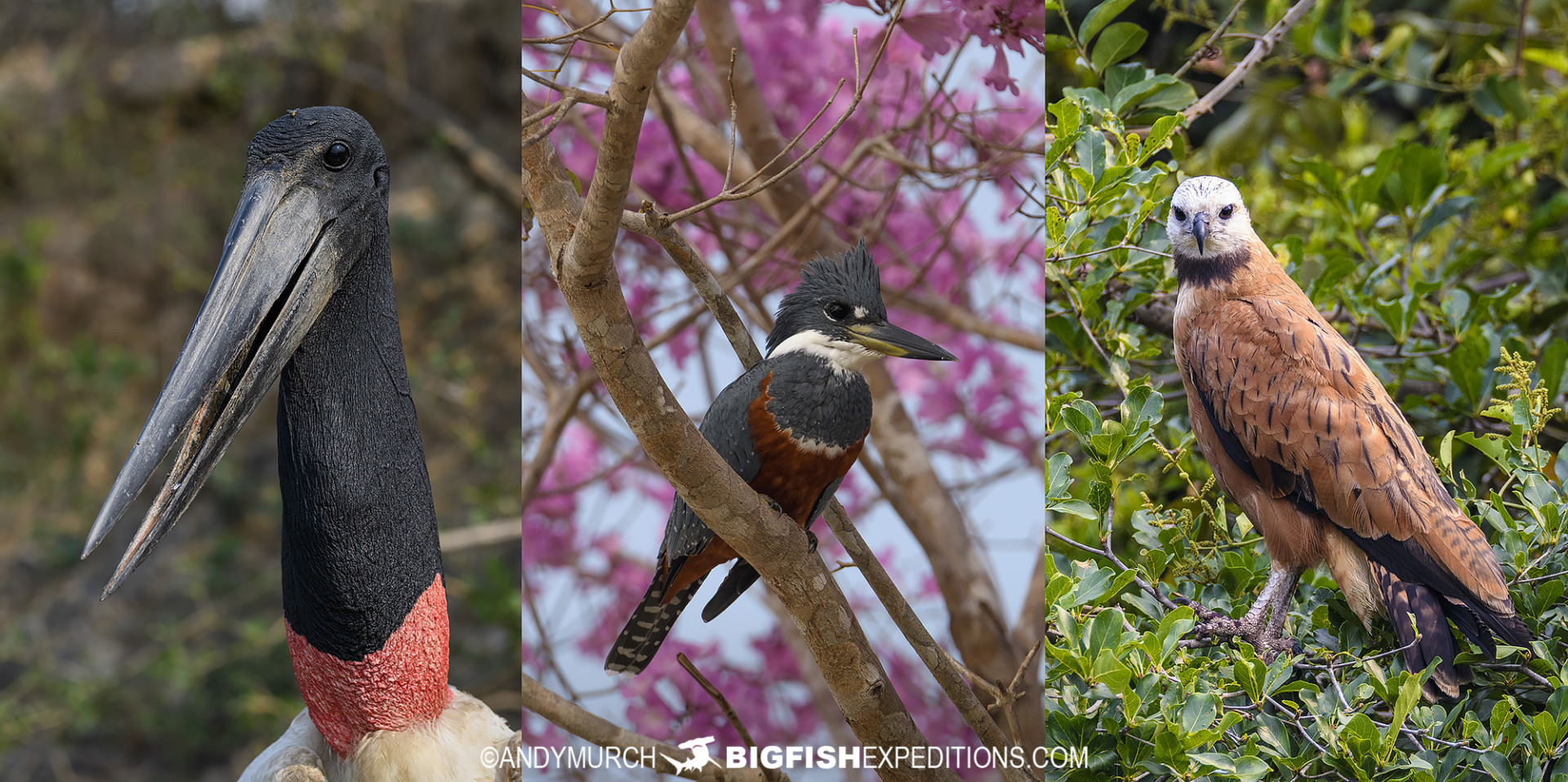
Howler Monkeys
In the Pantanal, all life gravitates to the river. Birds fish, caiman and jaguars hunt, and monkeys hang out in the trees eating the juiciest leaves and fruits. One of the most common primates that we came across were large troops of black howler monkeys, not all of which are black!
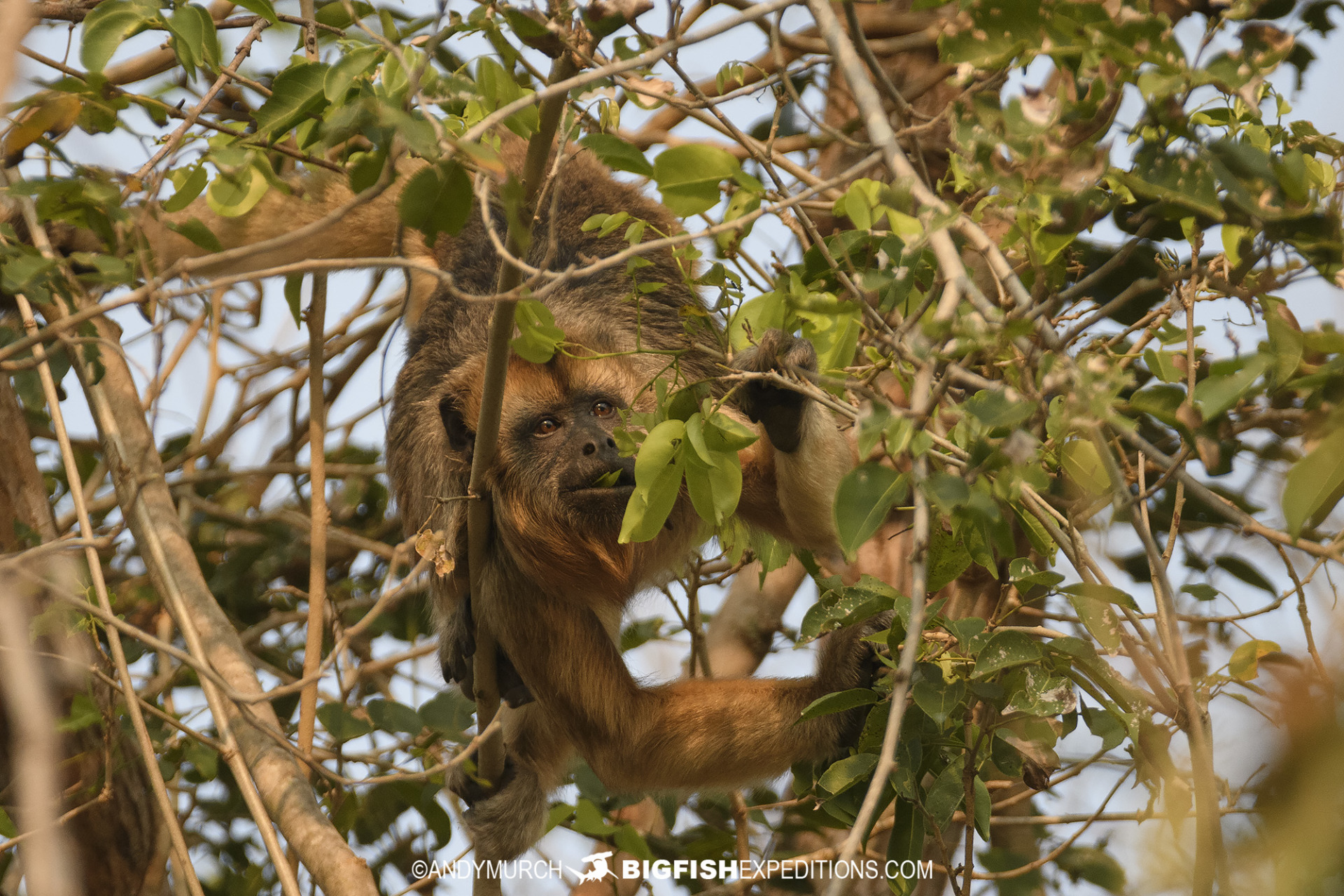
End of the line
As we motored along with our quiet electric engine, we passed large floats of water hyacinths. Eventuary they became so dense that they prevented us from going any further so we returned to shore for a rest, but most of us stayed out in the grounds and continued photographing birds.
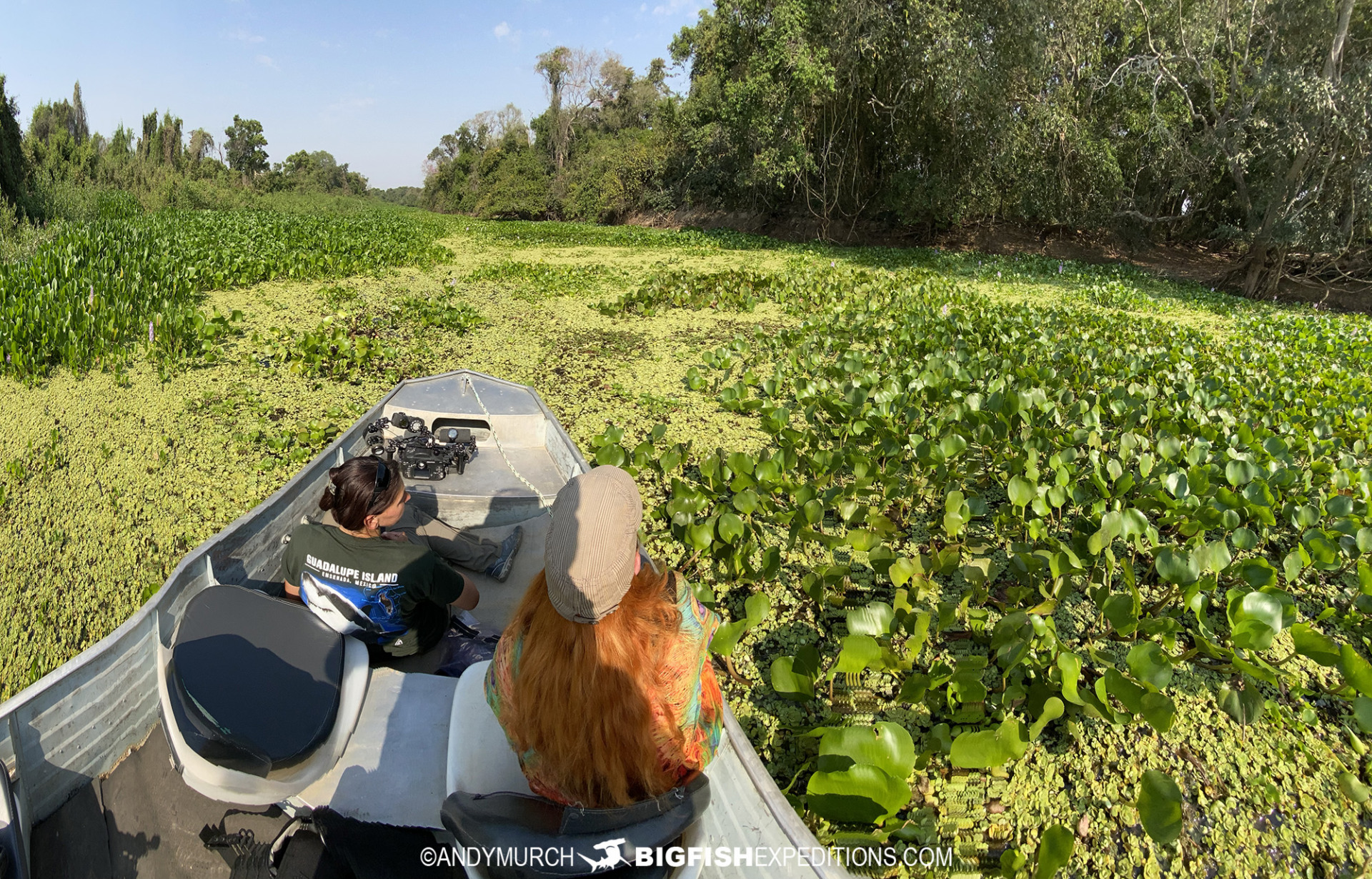
Caracaras
One of the most underrated and common birds of prey in the Pantanal is the Crested Caracara. This species looks like a hawk and acts like a vulture, but is actually a type of falcon.
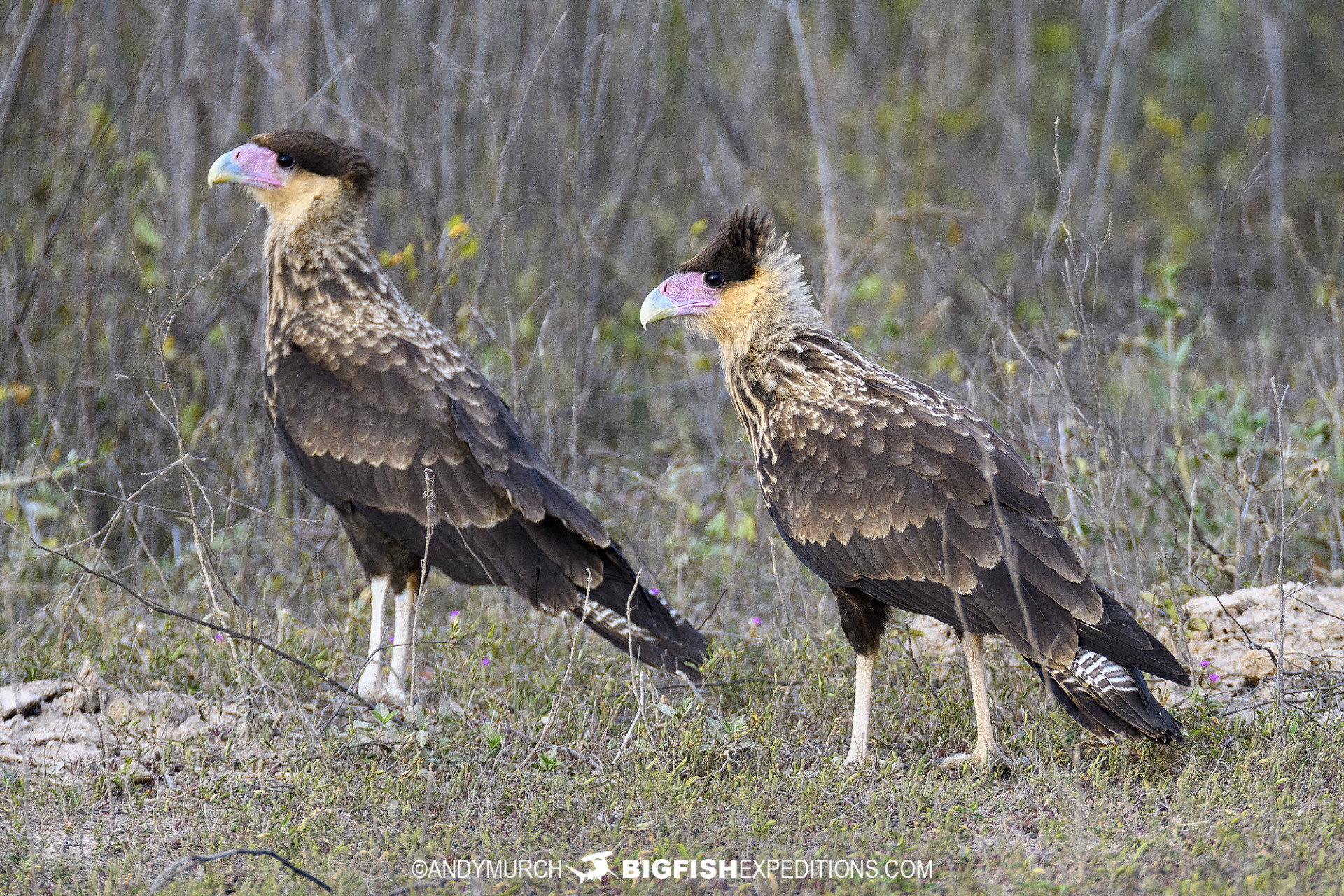
A walk on the wild side
After lunch we headed out on foot for a walk through the forest. The warning signs reminding us that we were in jaguar territory were a nice touch 🙂
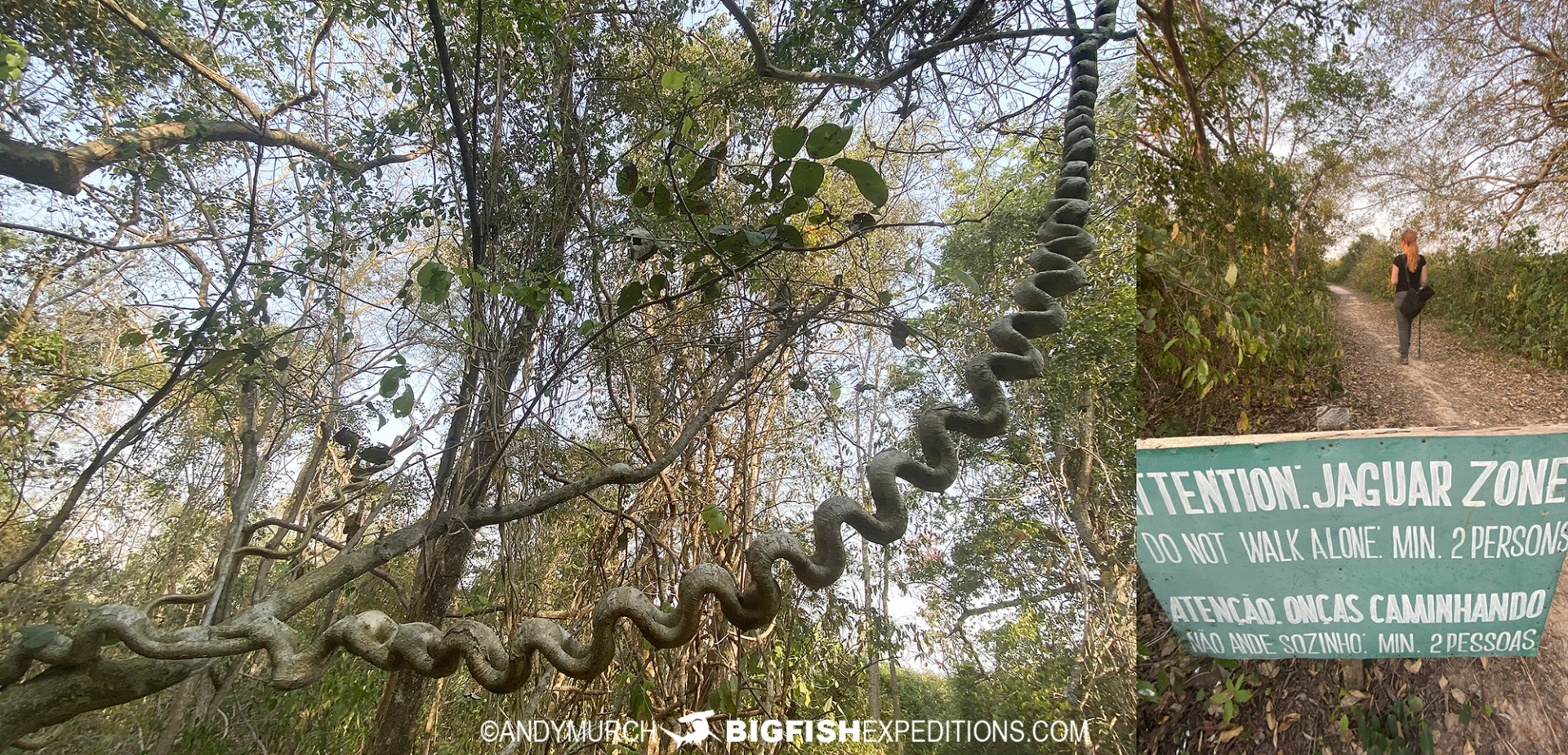
The world’s largest rodent
Almost immediately we ran into a large family of capybaras. These overgrown guinea pigs are another favorite food of jaguars. From a boat they are very approachable but on foot they’re a little shy so they quickly slipped into the water and made for the far bank.
The rest of the walk took us through dry forest but we did not stay out that long because we had to get back to the lodge in time for the main event!
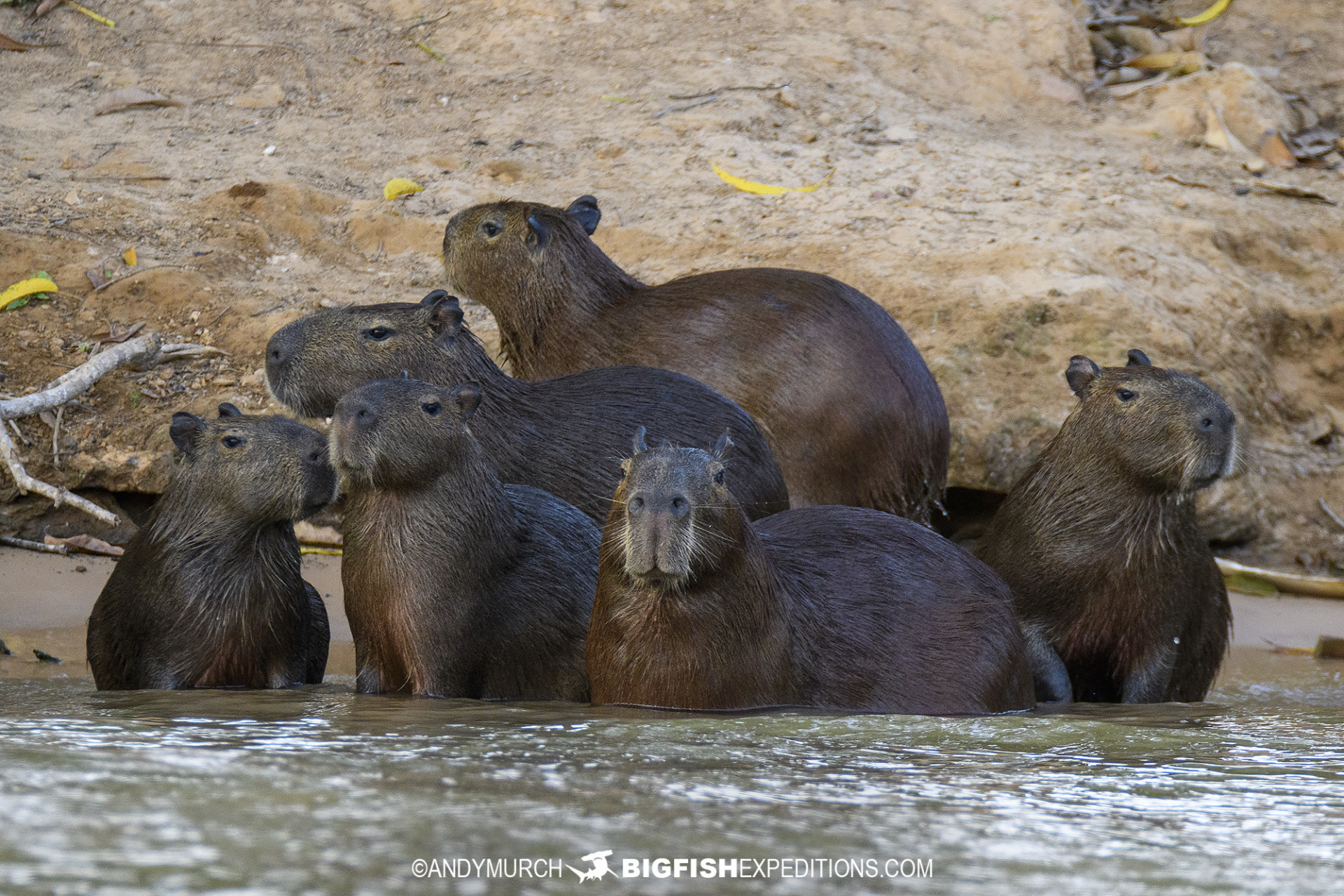
Ocelot Encounter
Just as the sun was starting to set, we made our way to the ocelot hide. Hides are generally covered areas where photographers can sit in secret without their quarry knowing they are there. This was a little different because it was actually just a bench at the edge of the forest. Each night, the staff put out a few scraps of meat for passing ocelots, and more often than not, one or two show up.
We waited patiently as the light faded into darkness. I was worried that the photography opportunities would be too challenging because flash photography was prohibited, but the staging area was well lit. Shortly after dark we saw a subtle disturbance in the forest, and then a beautiful ocelot materialized out of the bush and climbed up a branch in plain view of the photographers.
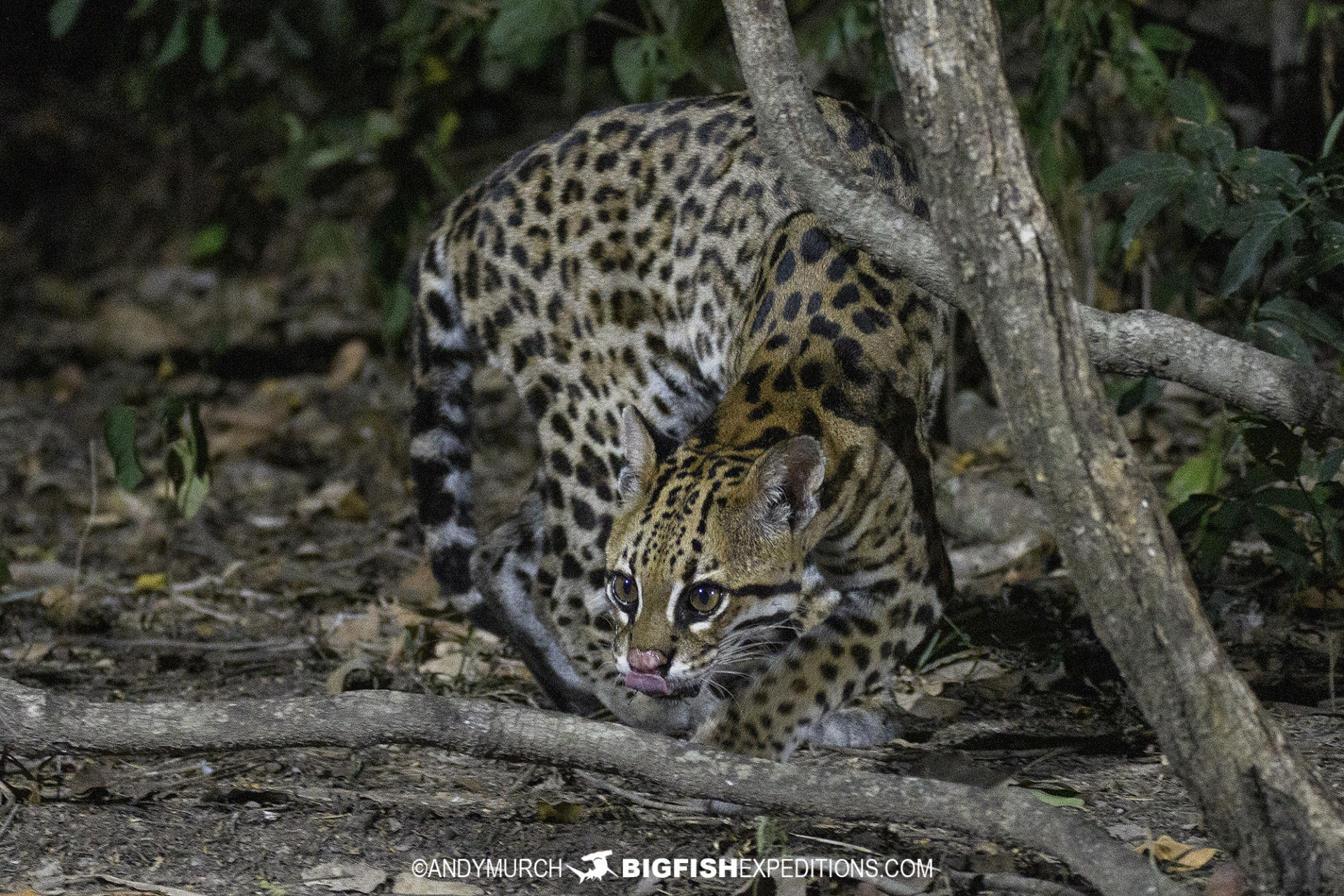
Ghost cat.
Although this was a baited encounter, I was still blown away that such an illusive animal had graced us with it’s presence. Ocelots are essentially ghost cats. Not especially rare but incredibly secretive, so the opportunity to see one tiptoeing out of the forest and peering directly at me, was an experience I will never forget.
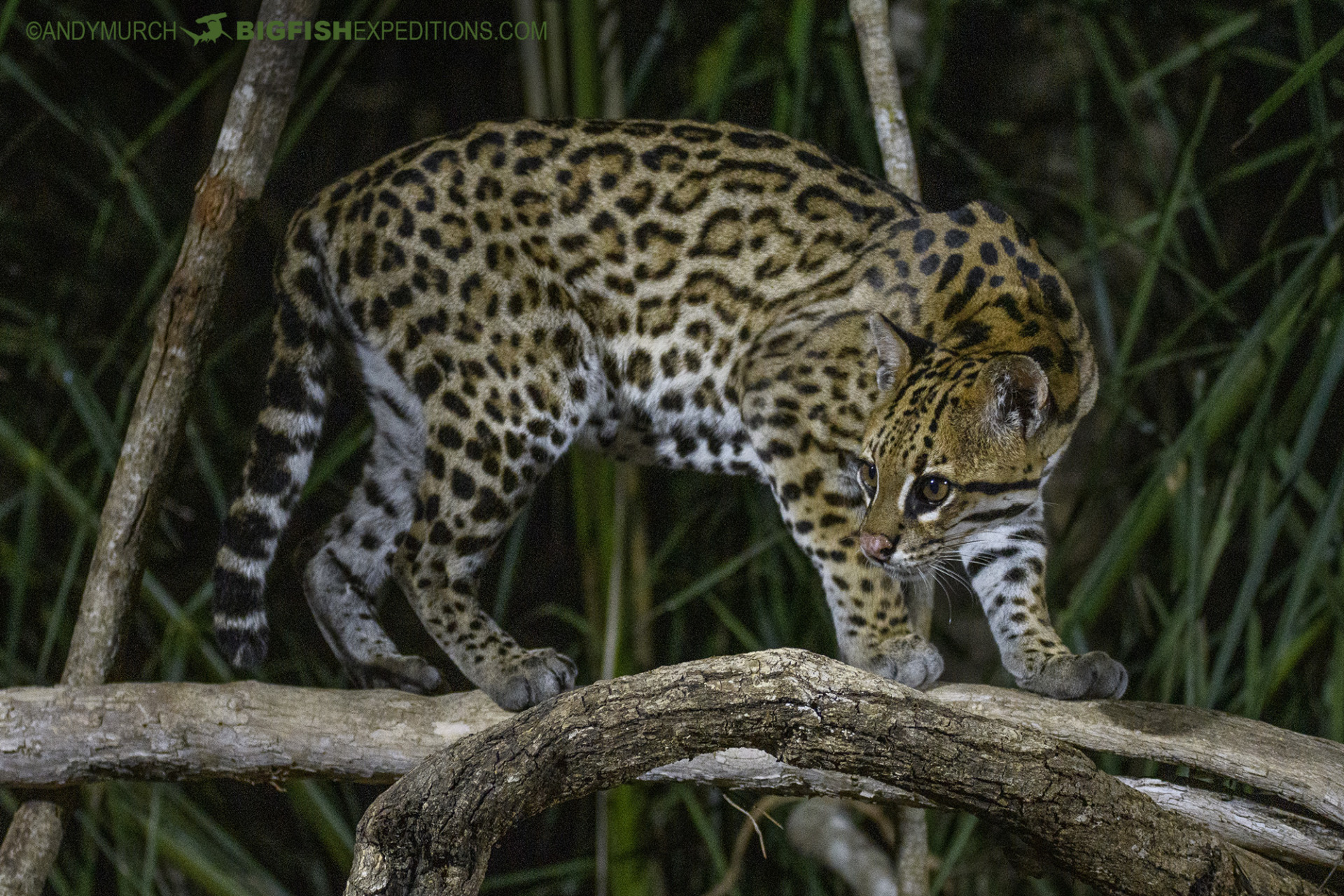
Onward to Porto Jofre
The next morning departed the lodge for Porto Jofre where our jaguar encounters would take place. This involved a three hour drive through pristine Pantanal wetlands, surrounded by water birds of every shape and size and hundreds of caimans. Half way along the route we made a pitstop at a private lodge surrounded by fruit trees. This was a great spot to see more beautiful parakeets and Blue Hyacinth Macaws.
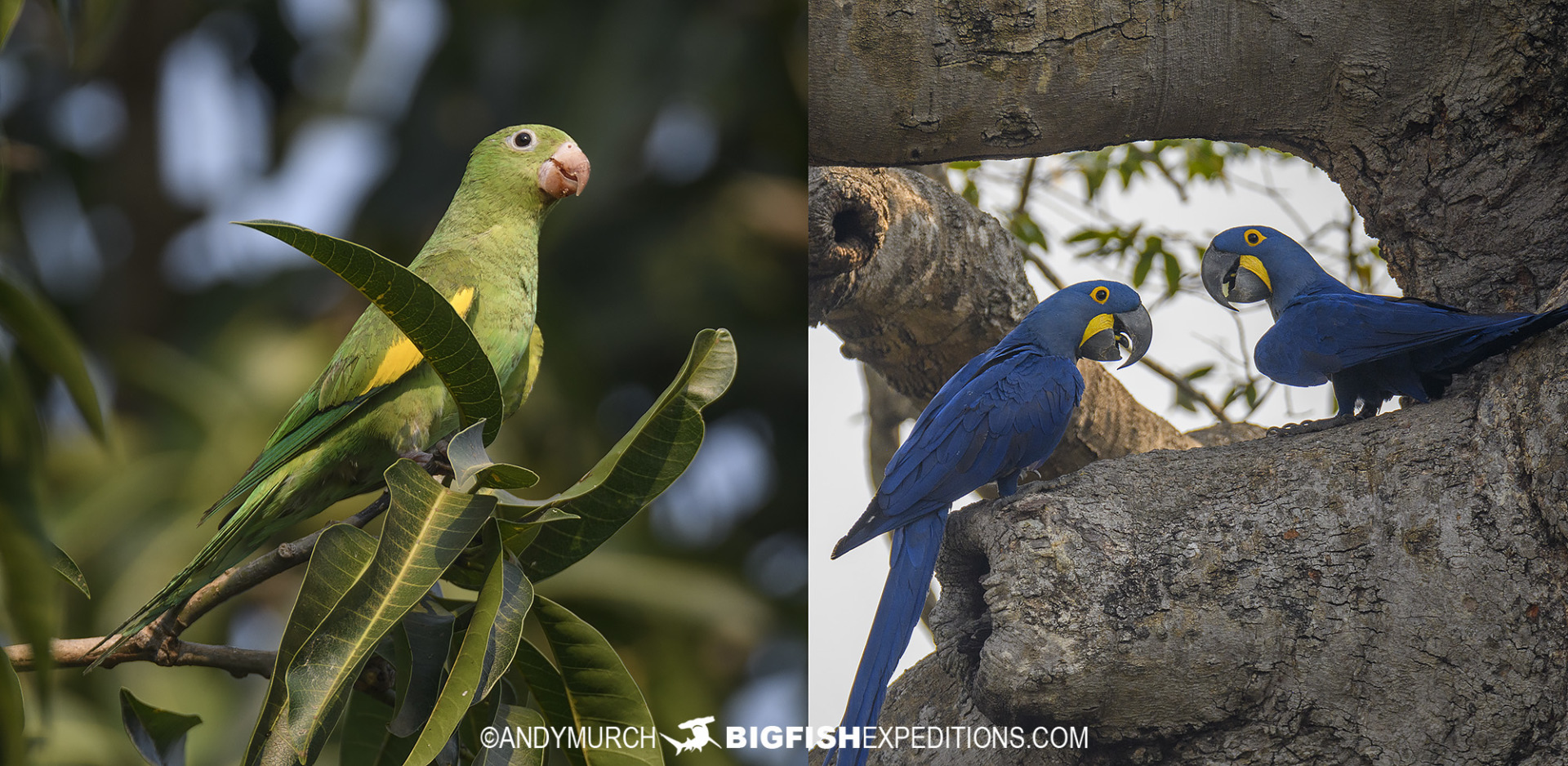
Yellow Anacondas
Further south, we can across an enormous yellow anaconda being pursued by a couple of smaller males. Although not as big as the green anacondas that we encounter on our Anaconda Diving Expeditions further south in Bonito, the yellow anaconda is a very impressive species.
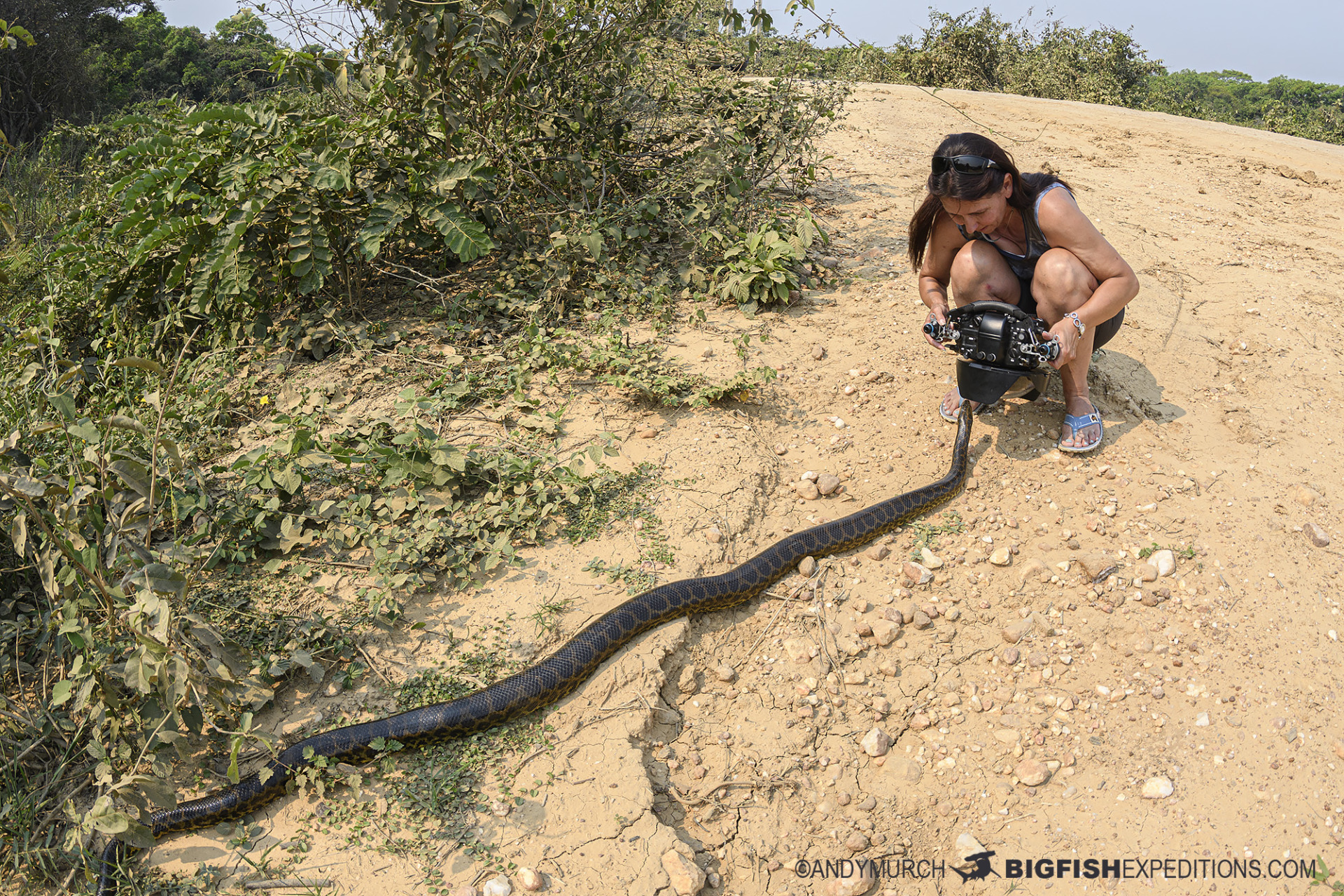
Wide Angle Anaconda
Anacondas are quite shy but with careful movements, we were able to get extremely close to it for an incredible wide angle photo shoot.
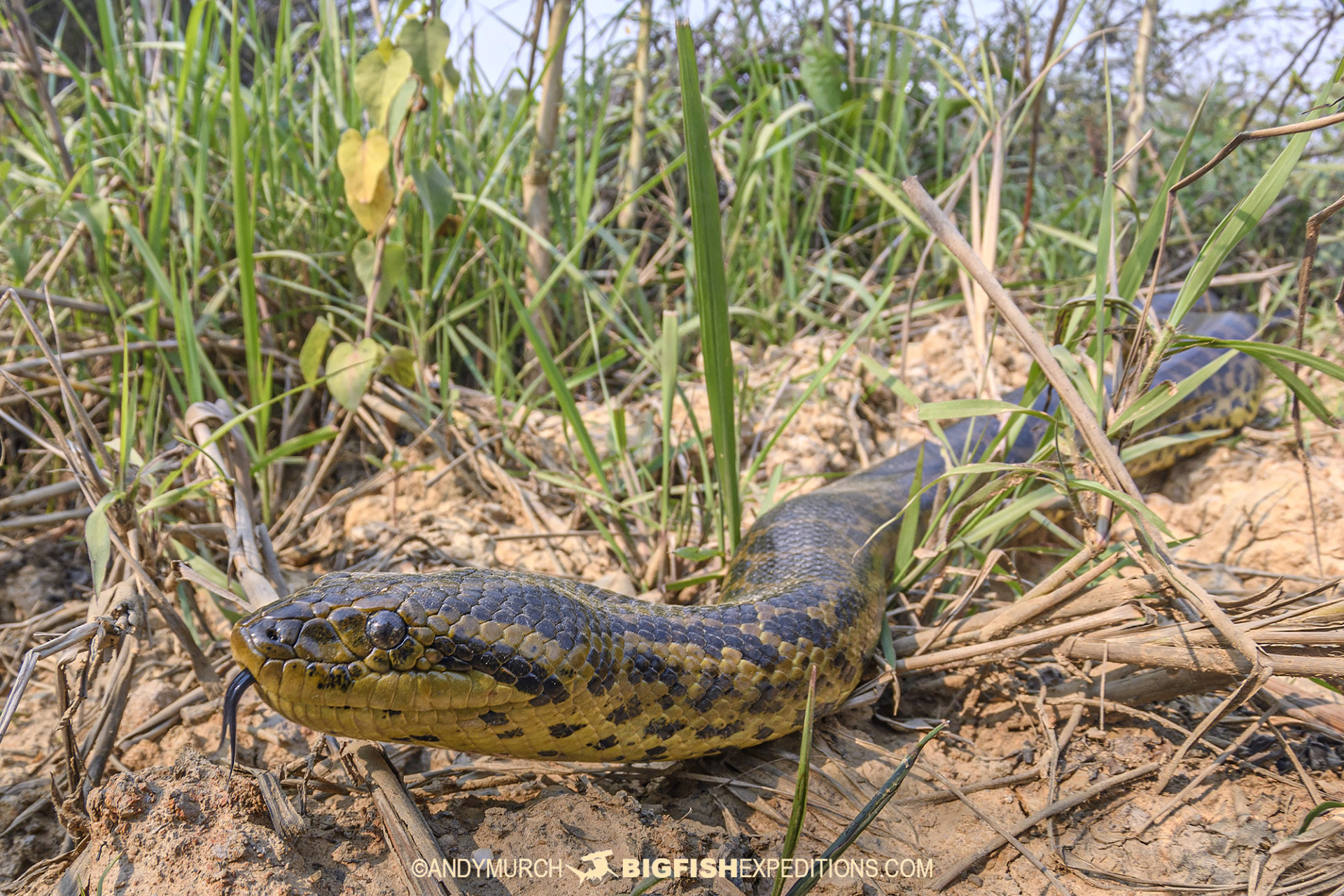
Giant River Otters
Just after dawn the next morning, we found ourselves on Rio Cuiaba searching for Jaguars. As usually caimans and capybaras lined the banks, but the first animals we slowed down for were a family of Giant River Otters. We spent half an hour watching them hunt, seemingly unconcerned about our presence.
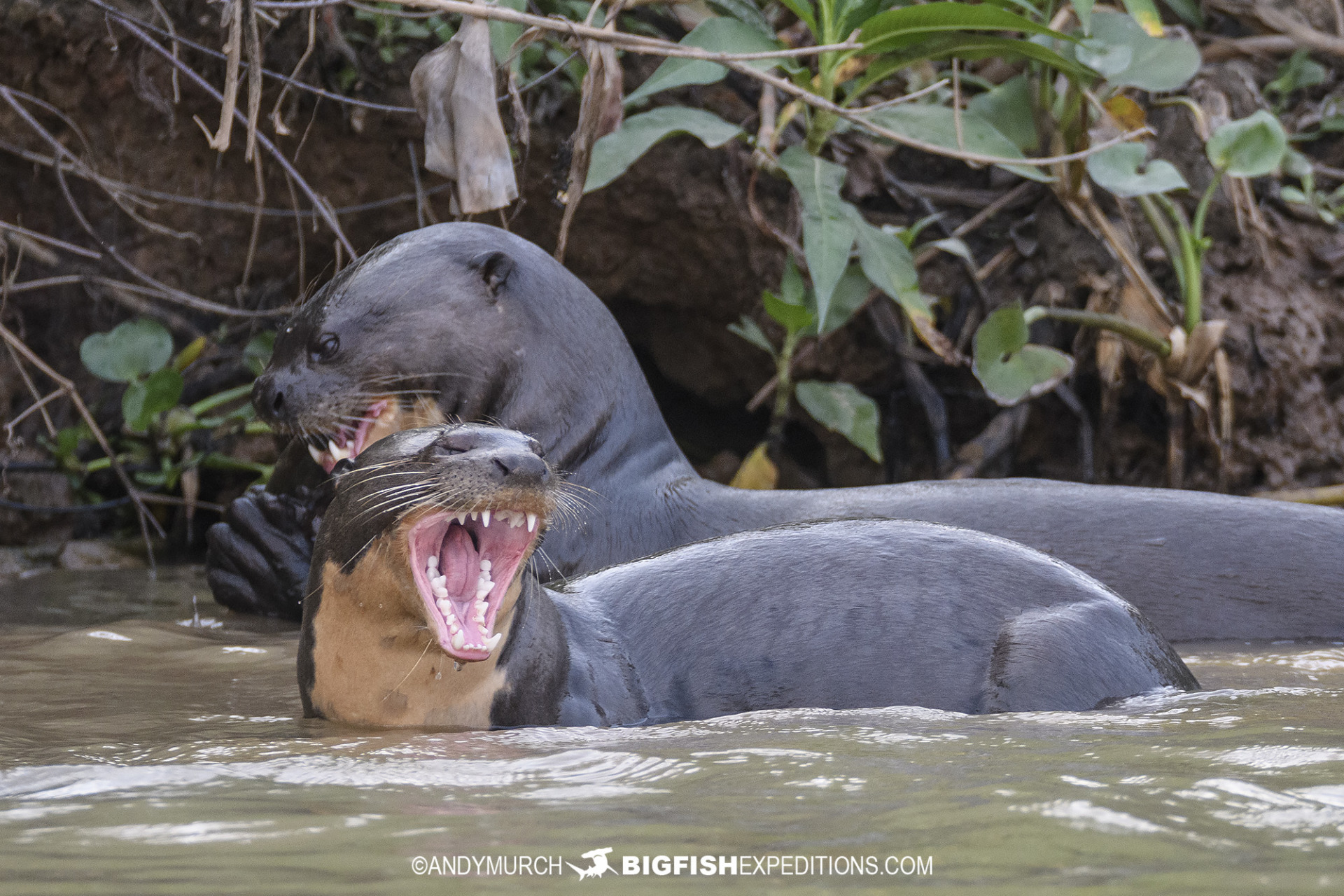
Tusk
Shortly after we left the otters, we spotted our first Jaguar crossing the river. This one was named Tusk. Almost all of the jaguars that live in the region have been named and catalogued. The local guides can tell which one is which even though there are more than a hundred jaguars hunting on the part of the river.
Unlike most jaguars, Tusk seems to really dislike humans, and gave us an intimidating snarl as he exited the river and disappeared into the undergrowth.
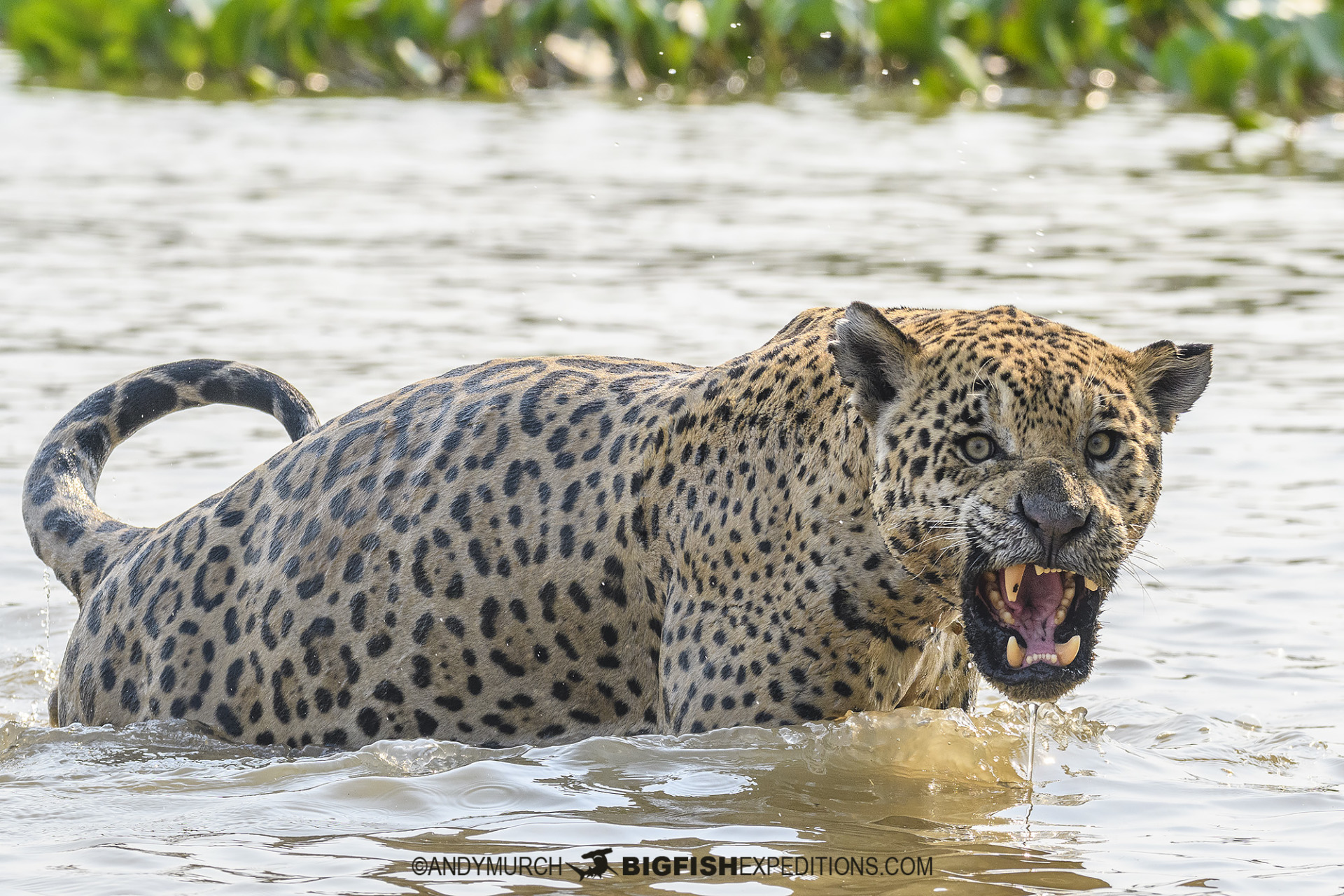
Ti
The next jaguar we found was named Ti. Ti was on the hunt, methodically working her way along the shore, puncing on anything that moved in the hyacinths. I thought that she would disappear once we got close to her, but she was content to let us flank her from ten metres away while she went about the business of finding lunch.
We literally followed Ti for hours. She seemed equally happy swimming of climbing along the bank; very un-cat-like behavior that is unique to Jaguars.
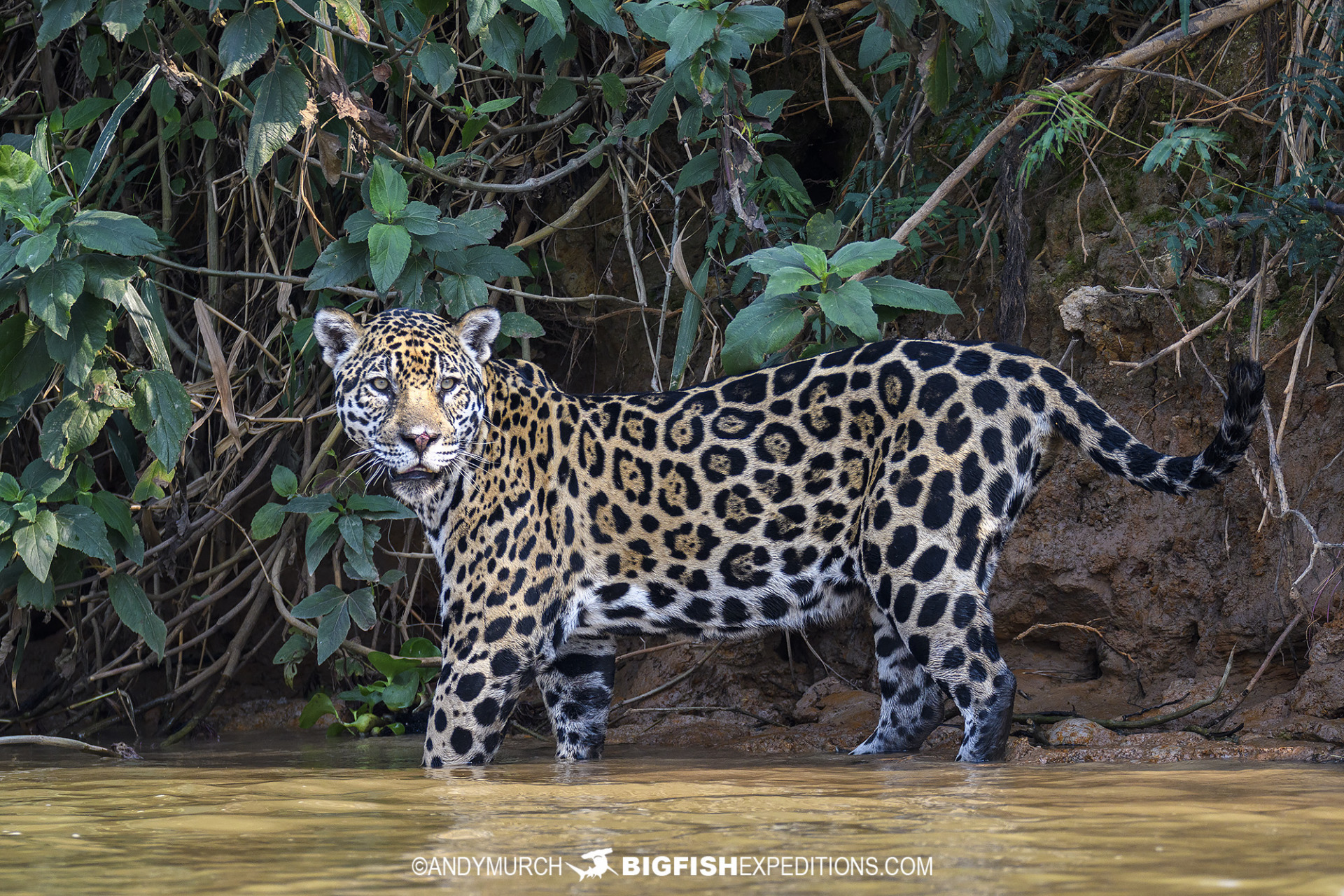
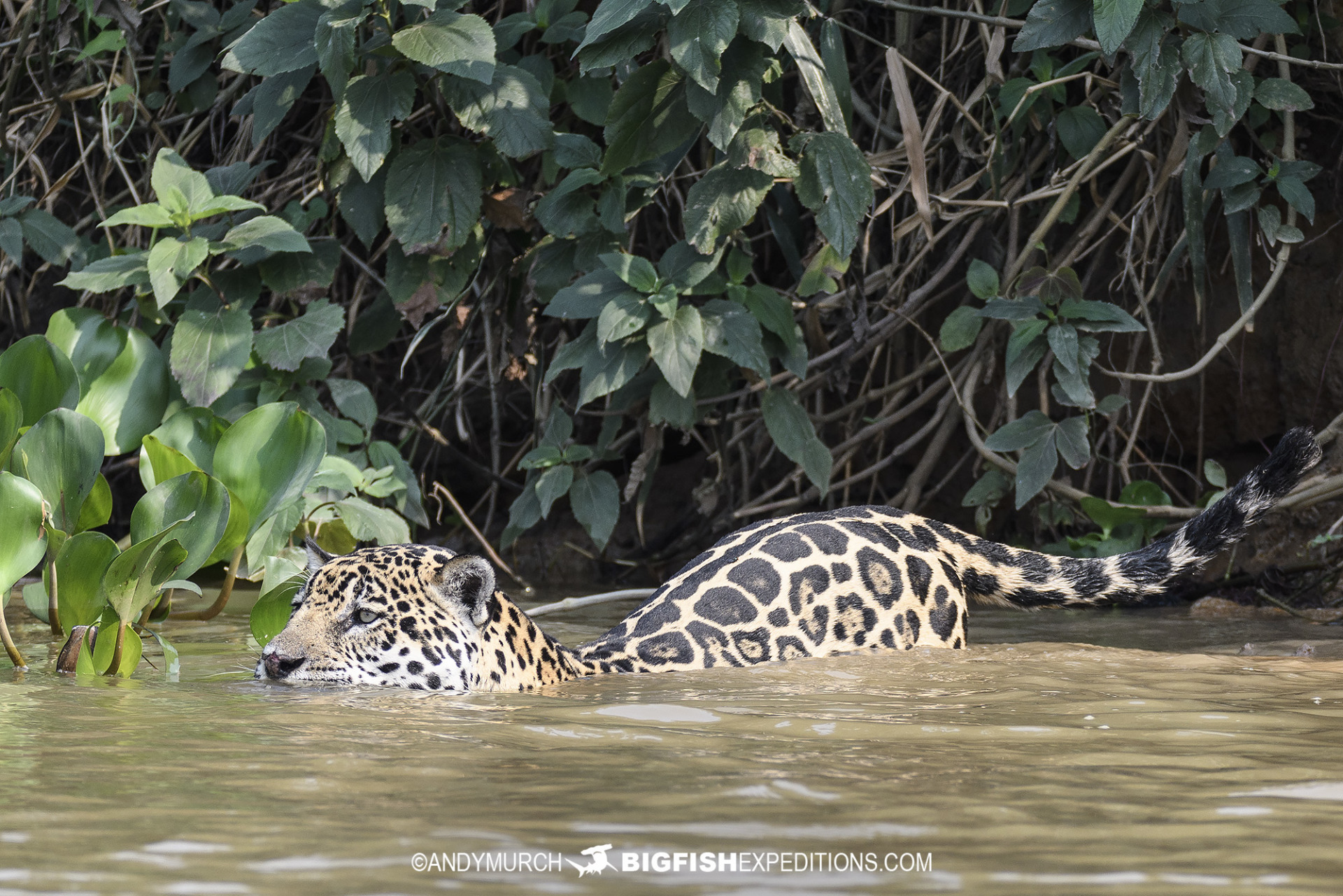
Bagua and Xingu
Eventually Ti got tired and settled down for a rest. Leaving her behind we motored further upriver and came across an unlikely pair of Jaguars named Bagua and Xingu. These two males have no obvious reason to hang out together but they seem to get along regardless, and have been seen together on numerous occasions.
Xingu was resting in the shade at the end of the beach while much larger Bagua jumped around trying to catch flies that were clearly causing him some annoyance.
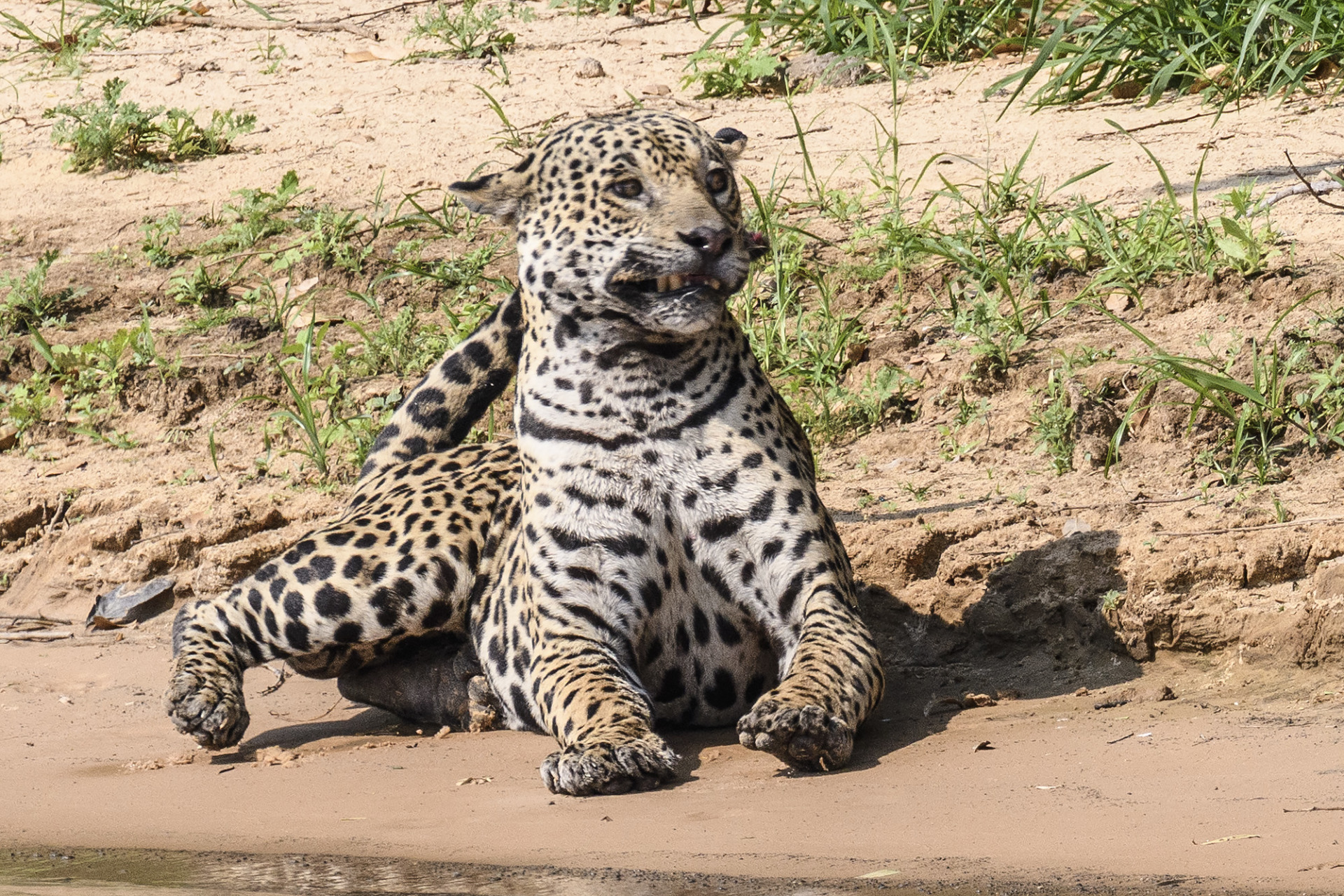
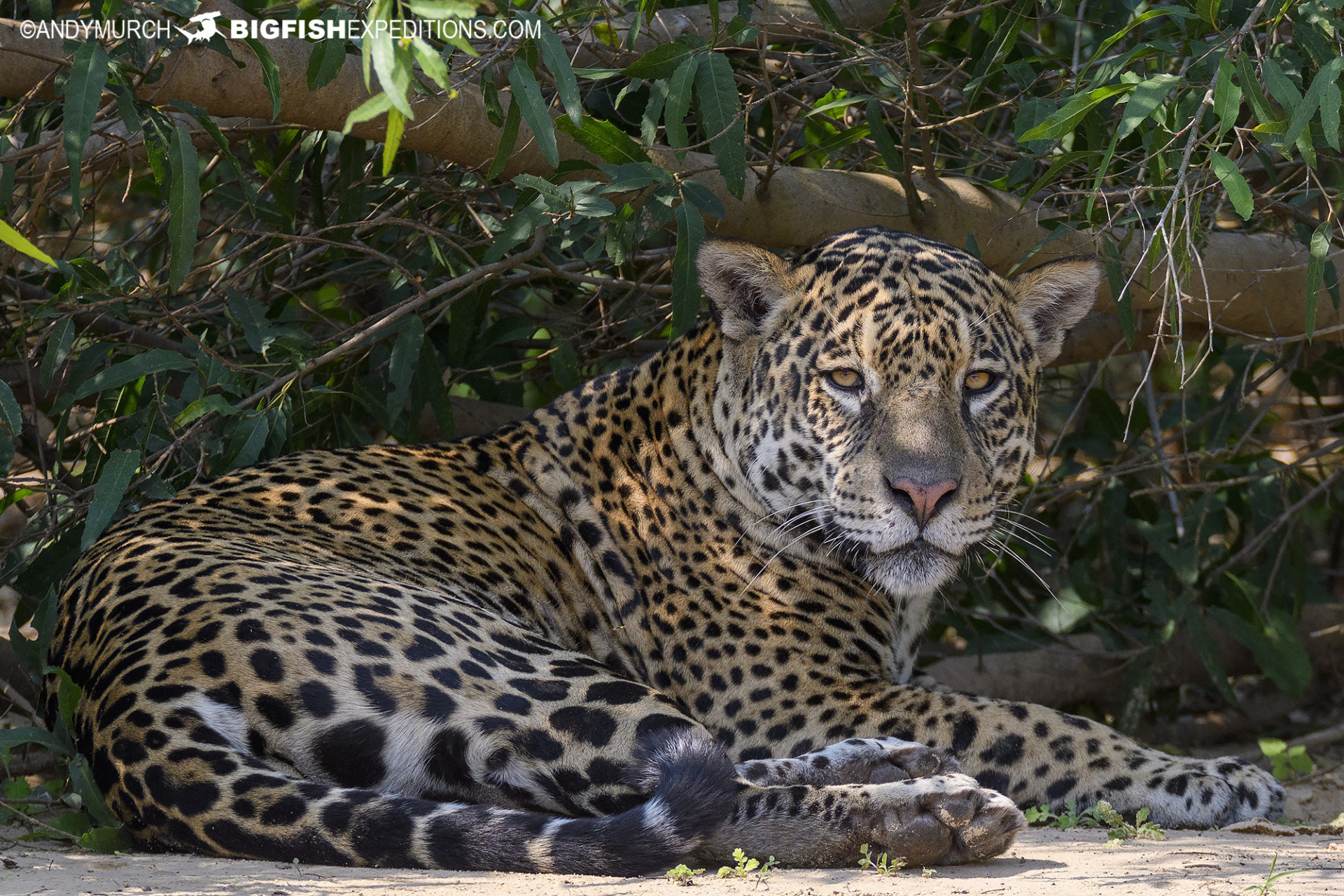
Rosette Spoonbills at dusk
Many wonderful avian and terrestrial opportunities later, including a meeting with another jaguar, we finished our day watching rosette spoonbills feeding on a sand bank in the warm glow of the setting sun. Then we made our way back to the lodge in silence, all feeling a little humbled and overwhelmed by the days incredible encounters.
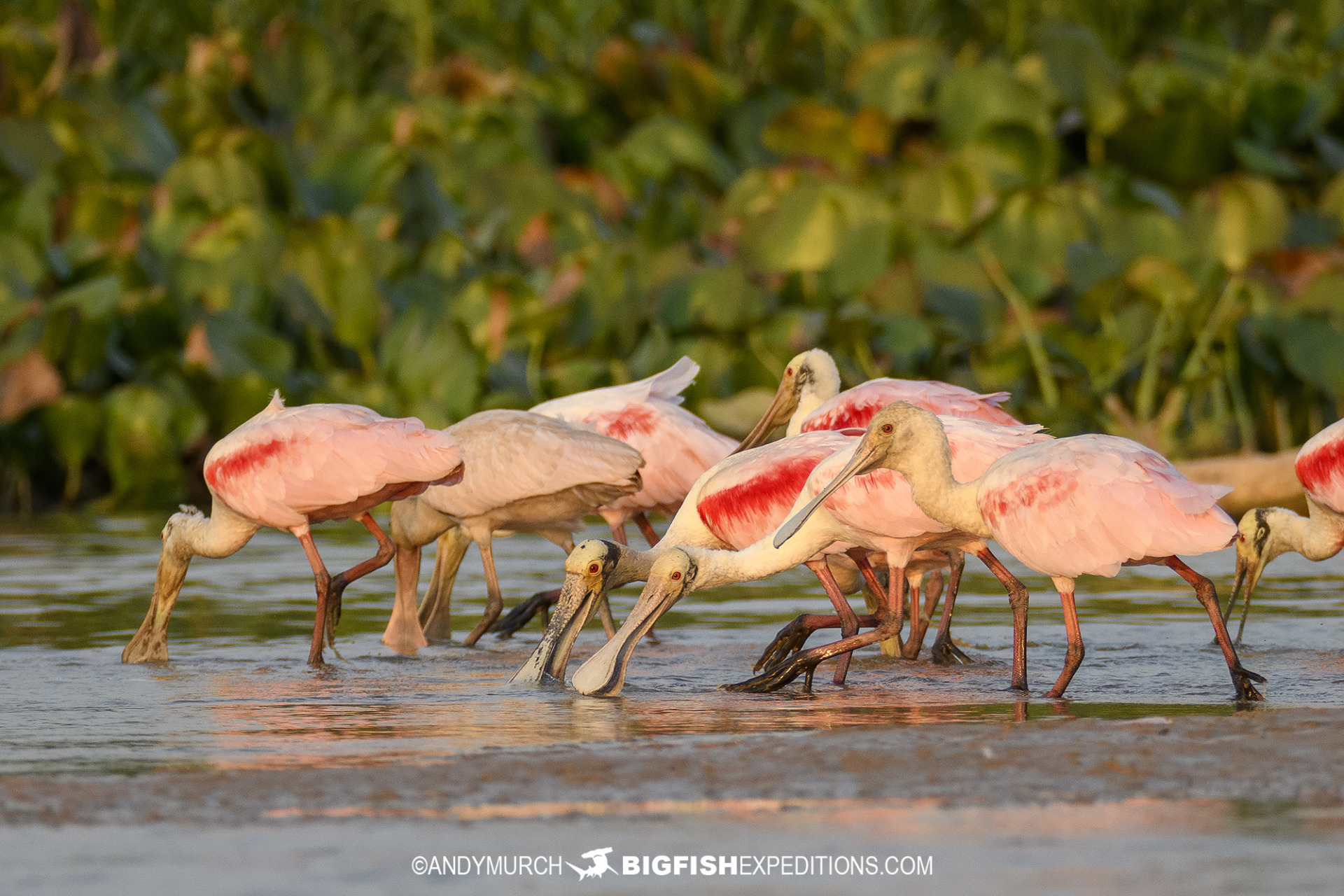
Yiara
The next morning we had barely left the dock when we saw a jaguar name Yiara hunting for Capybara on the far bank. Immediately heading over, we watched her patiently stalking her prey.
Eventually the wind shifted and the nearest capybara sprang into the water, sounding the alarm as it surfaced. A capybara alarm call sounds like a cross between a honking goose and squeaky toy. The distress in that sound is palpable.
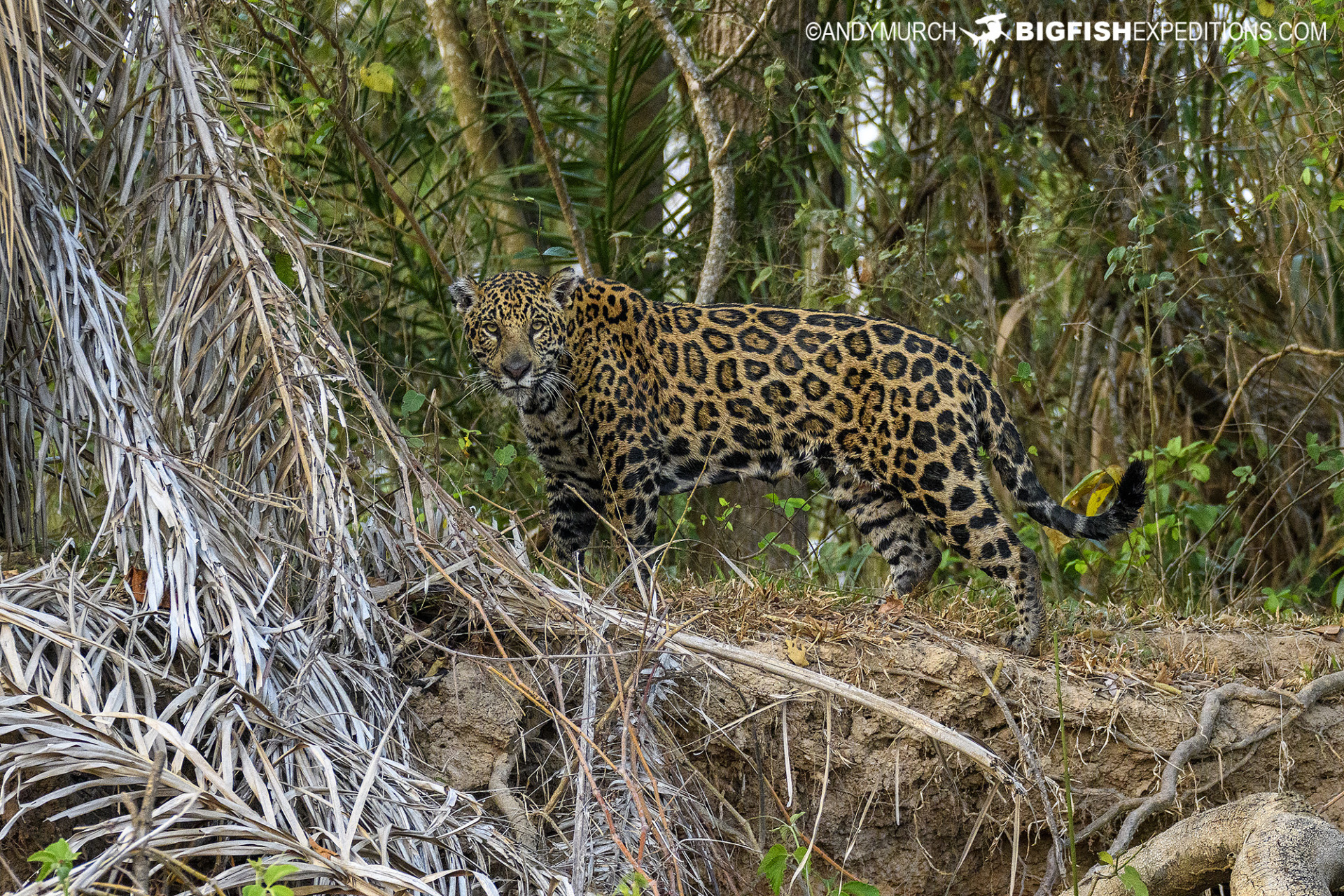

A successful predation
Unfazed by her discovery, Yiara simply blended into the undergrowth until the capybaras slowly made their way back to the bank. The one agonizingly slow step at a time, she worked her way to toward them again.
This time her stealth and patience paid off. She worked her way up the bank and attacked from above, exploding down on the nearest capybara with terrifying speed and accuracy.
Mercifully, the actual kill took place within the water hyacinths and then we saw her reemerge with her quarry. Witnessing a predation gives many people an uncomfortable feeling, but this is life in the jungle and I felt privileged to have seen it first hand. Rather than consuming the capybara, she dragged the carcass away to feed her cub, which was likely waiting hungrily nearby.
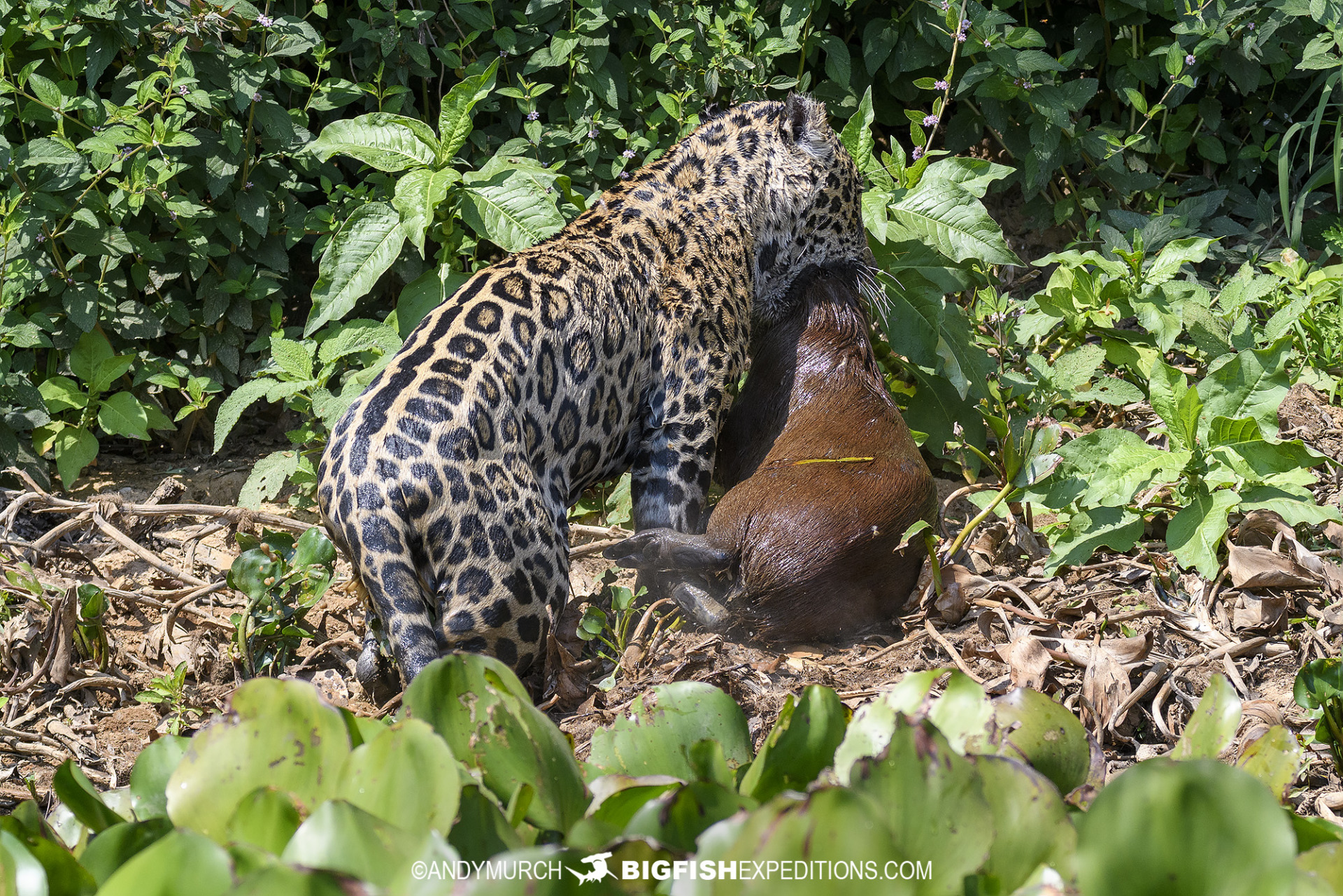
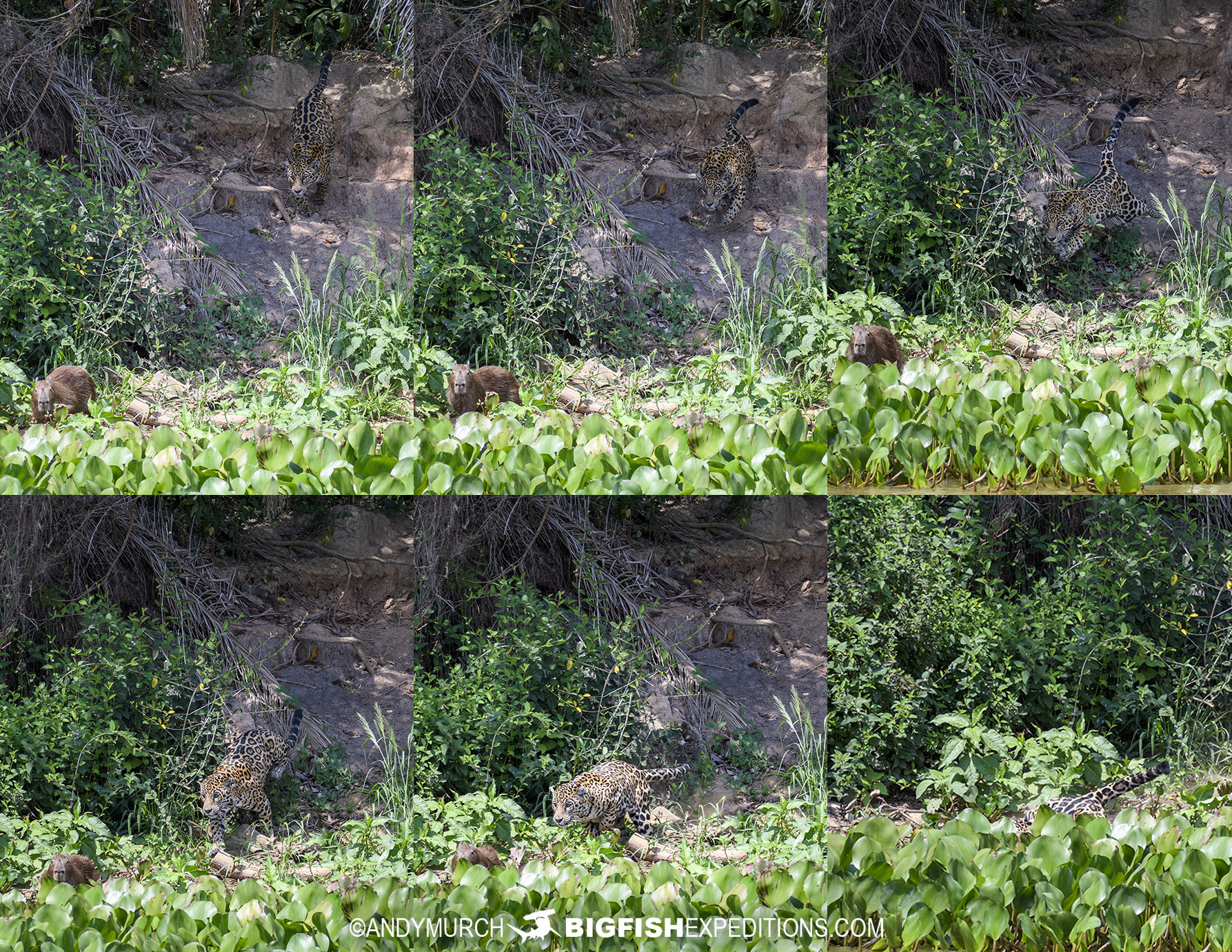
Patricia, Kamir, Krishna, and Mendosa.
During the afternoon we encountered four more Jaguars. Three were in various states of repose but a large female jaguar named Medrosa was on the hunt.
We followed her for some time as she worked her way methodically along the river.
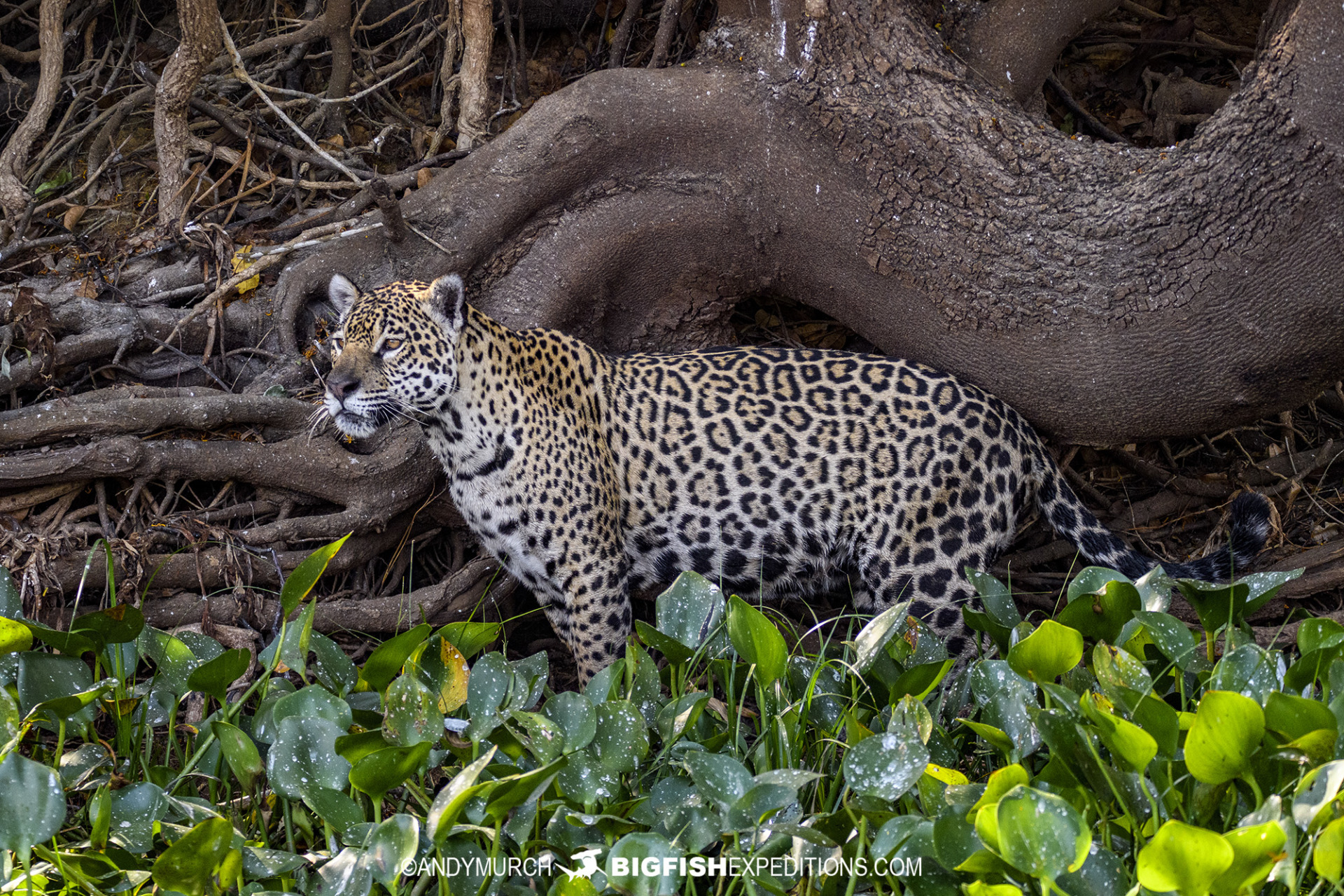
Fish eating caiman
Between jaguar encounters we spent our time photographing caiman as they gobbled down catfish, or sunned themselves on the banks of the Rio Cuiaba.
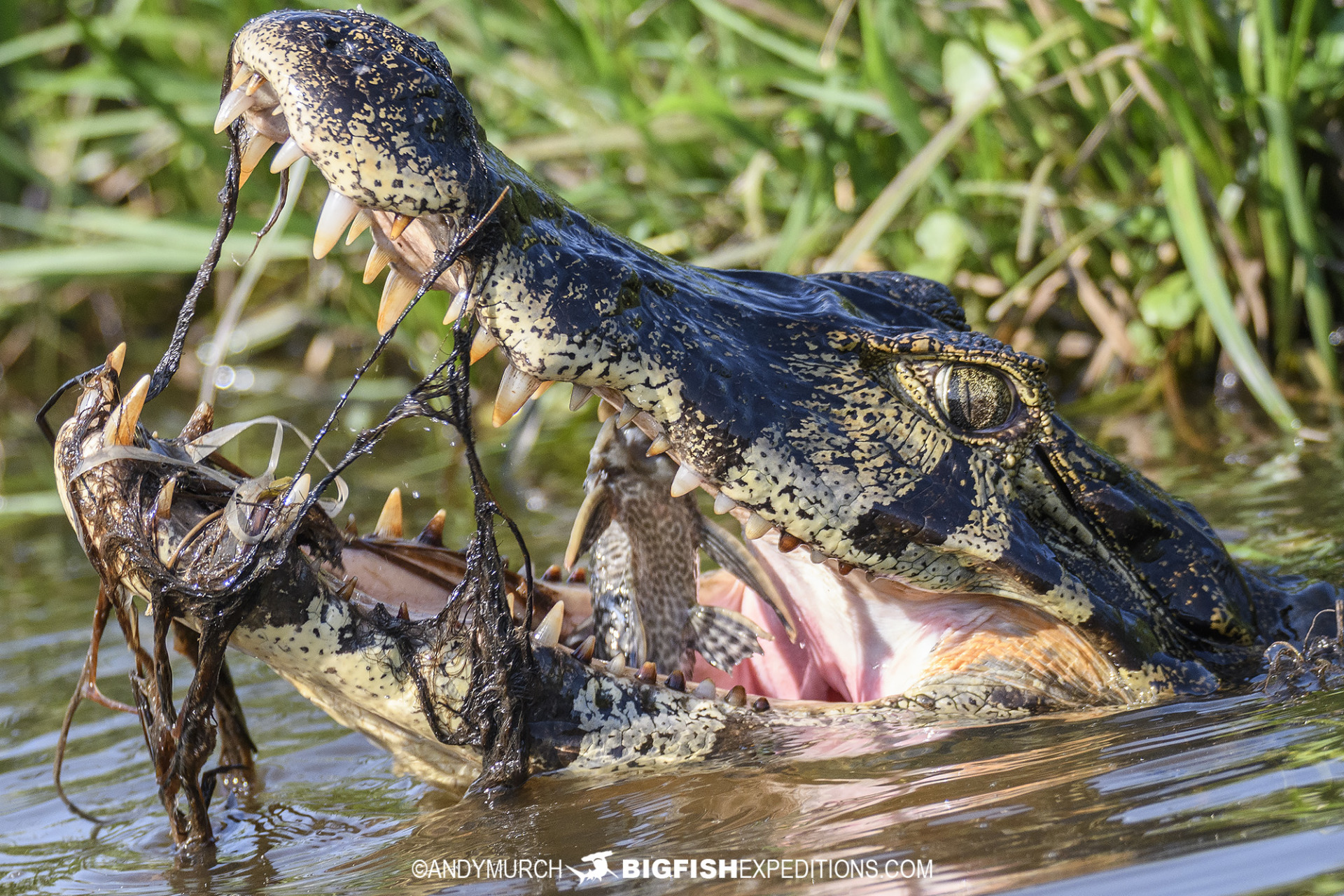
Raptors in flight
After getting respectable images of all the common raptors in the area, we upped our game by concentrating on raptors in flight, including this Great Black Hawk.
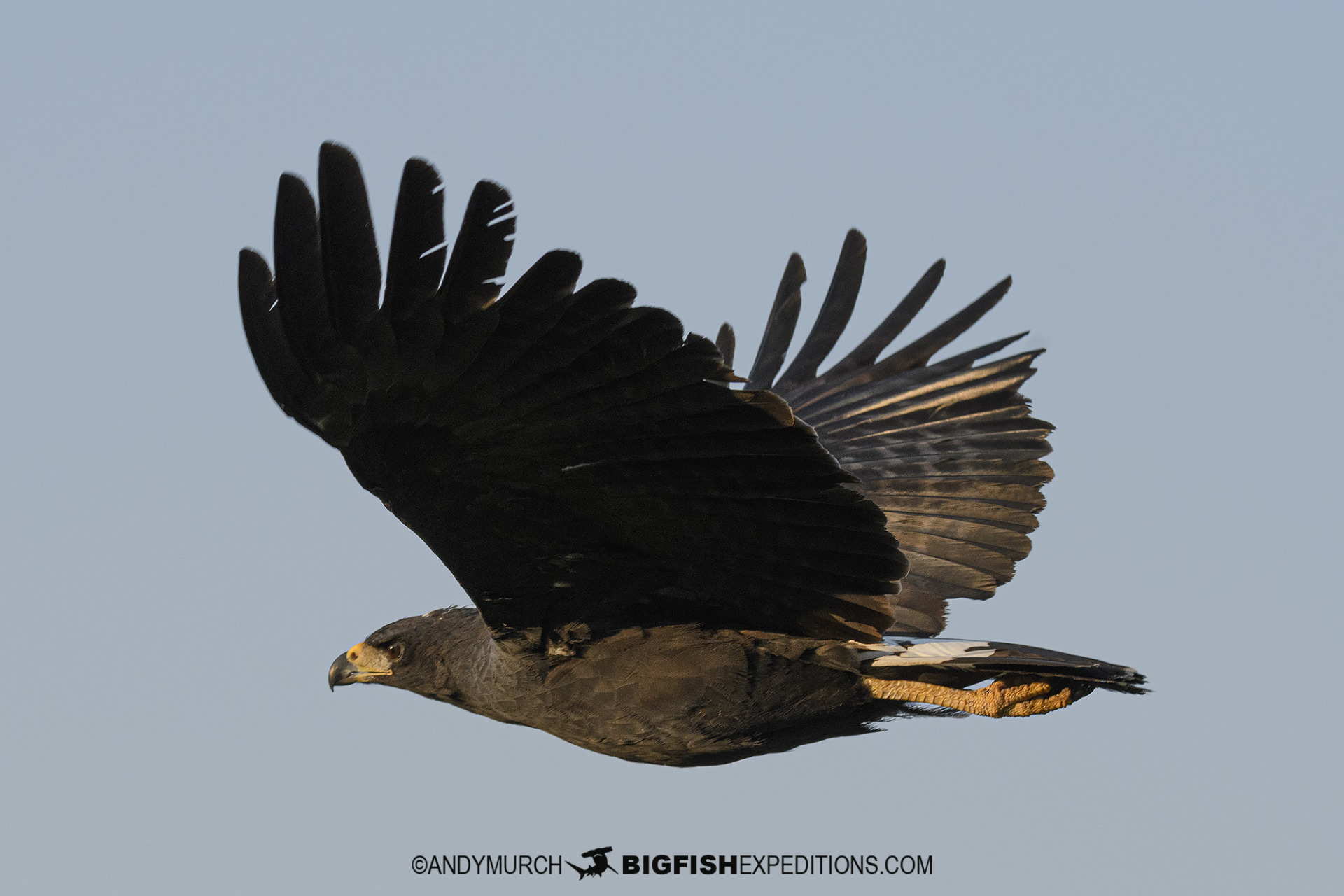
Juru
On our final day in Porto Jofre, we spent time with a large male jaguar named Juru. We fist found him crossing the river, swimming against the relentless current to reach his favorite hunting grounds.
Bold and battle scarred, Juru is an alpha male that is known to have sired young with at least five other jaguars including Patricia and Medrosa who we had photographed the day before.
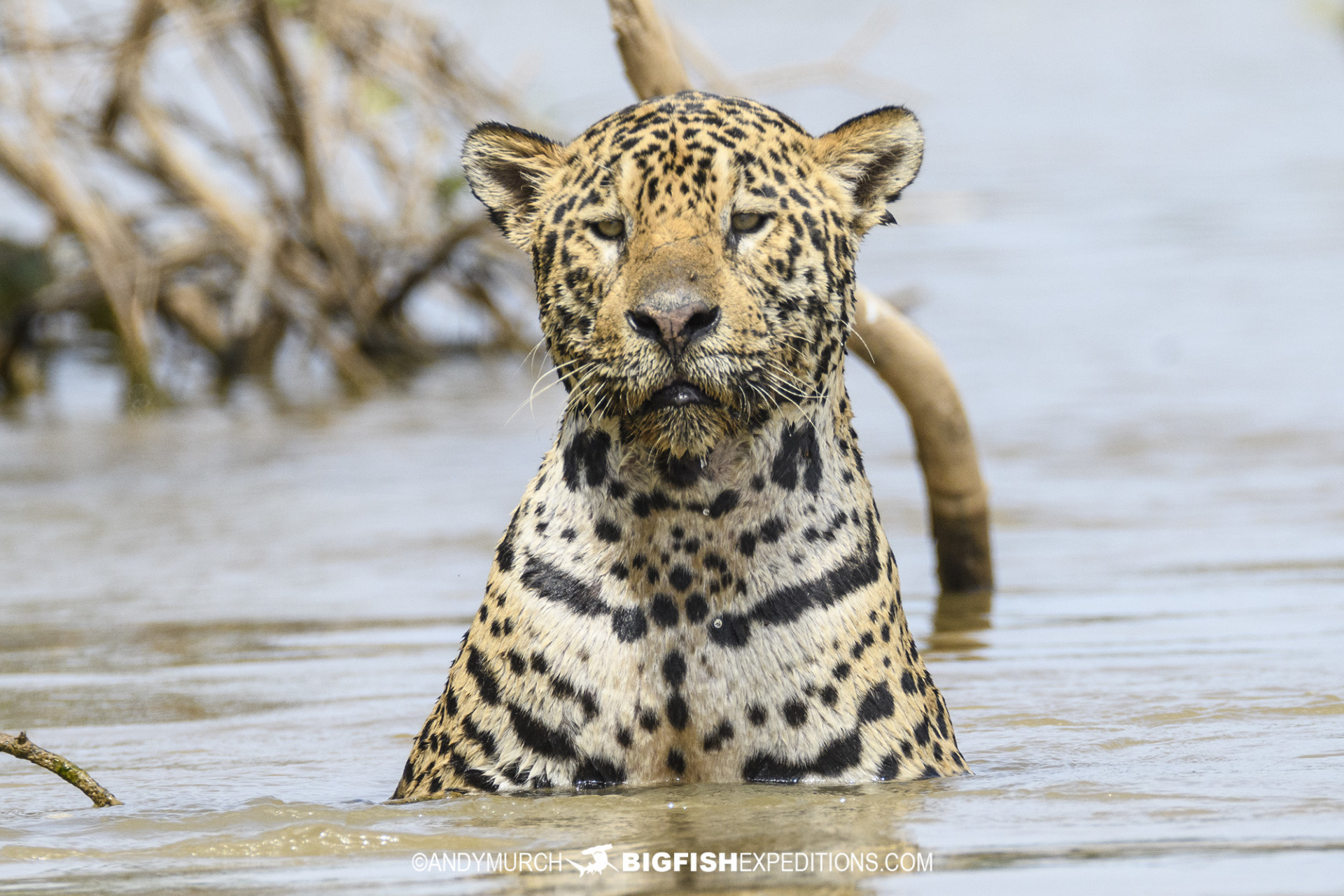
A rare Potoo Bird
After we left Juru, we found a rarely seen Potoo. These strange owl-like birds are so well camouflaged that it is hard to differentiate them from the trees they roost in.
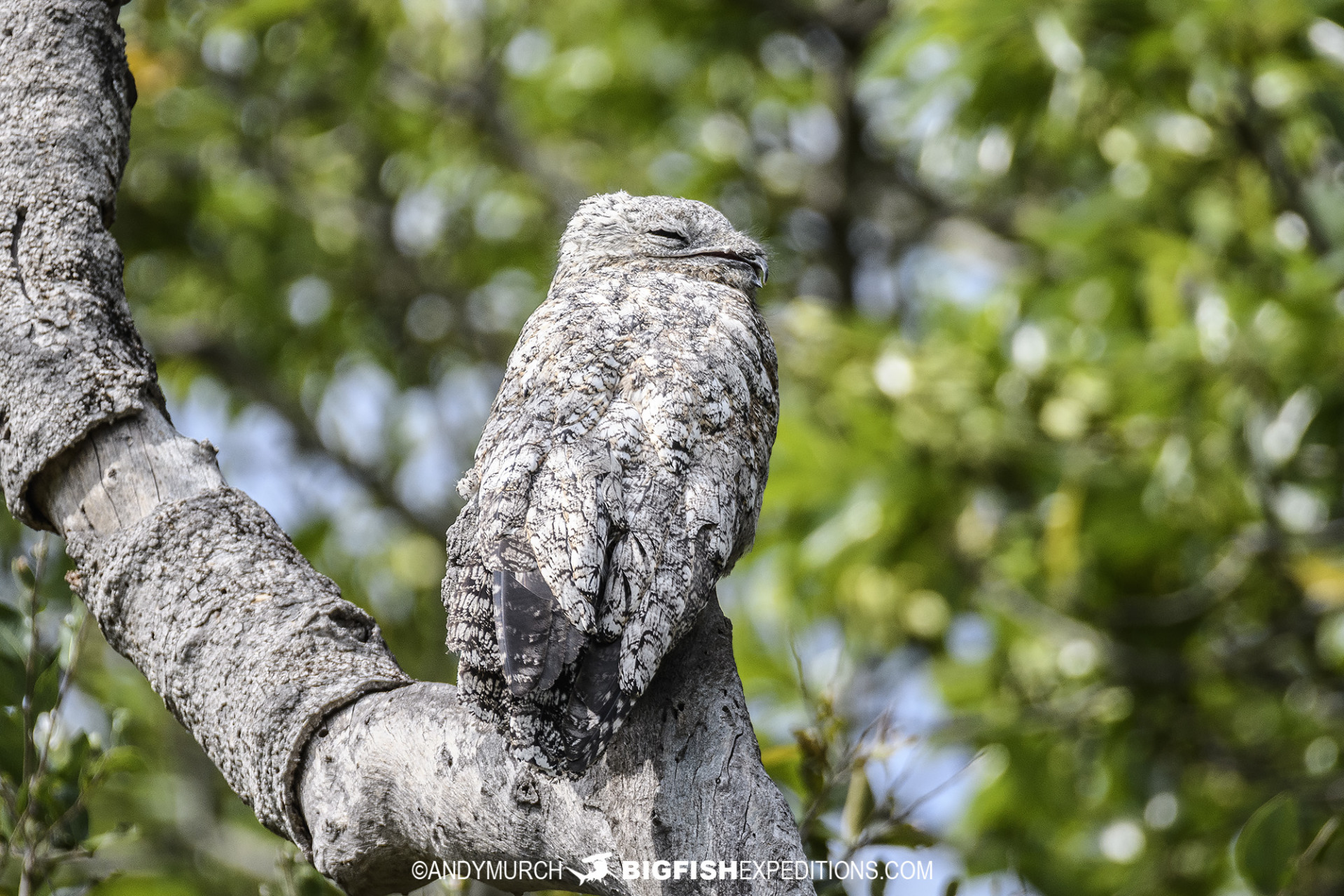
Proboscis Bats
While we searched for more jaguars, we found a family of Proboscis Bats roosting on a tree overhanging the river. Having photographed many species of bats around the world, I was pleased to add this species to my collection!
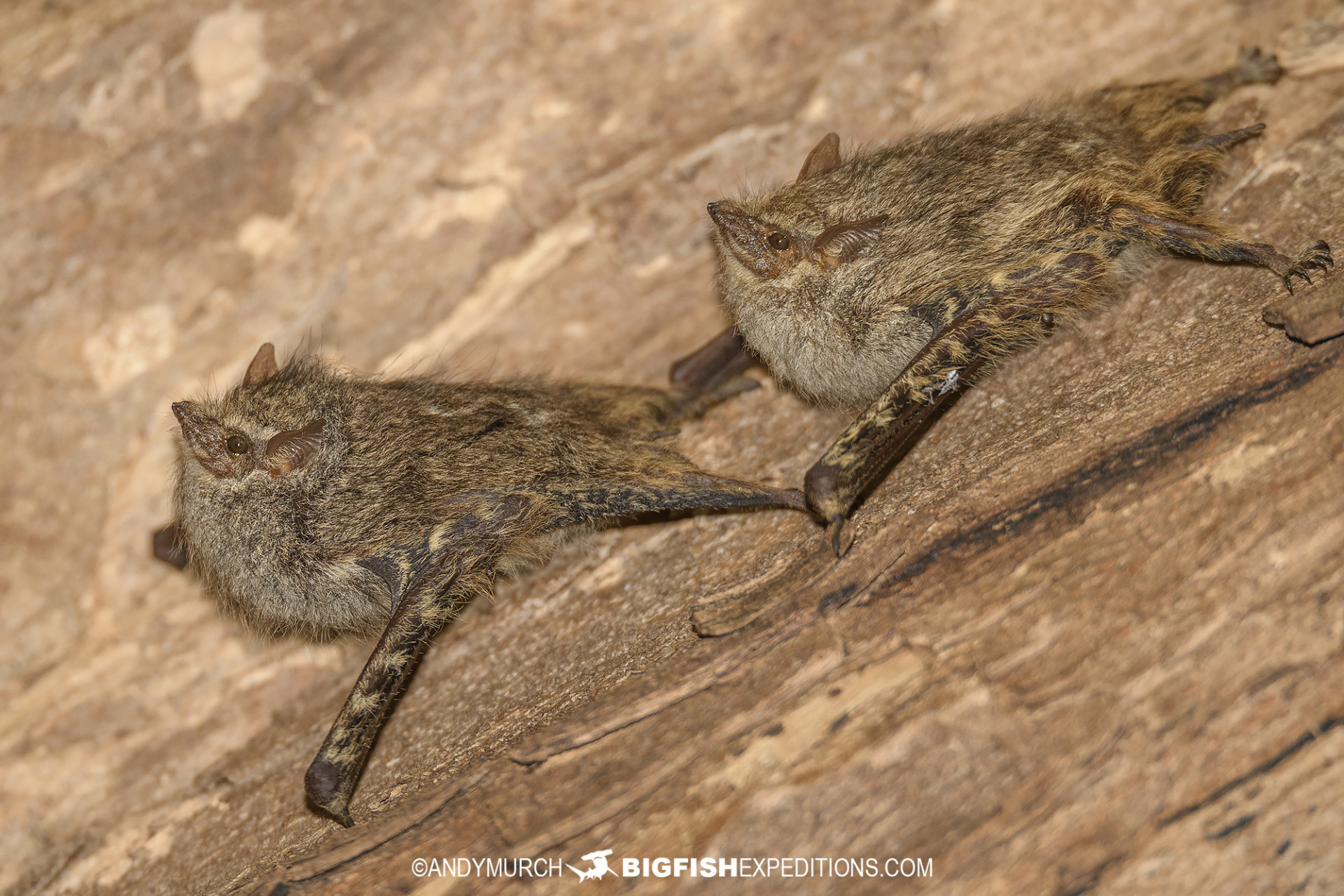
Ibaca
Our last jaguar was a beautiful female named Ibaca. We found her far upriver in an area where few boats usually go. She was extremely relaxed around us and allowed us to follow her extremely closely as she hunted for lunch for her cubs.
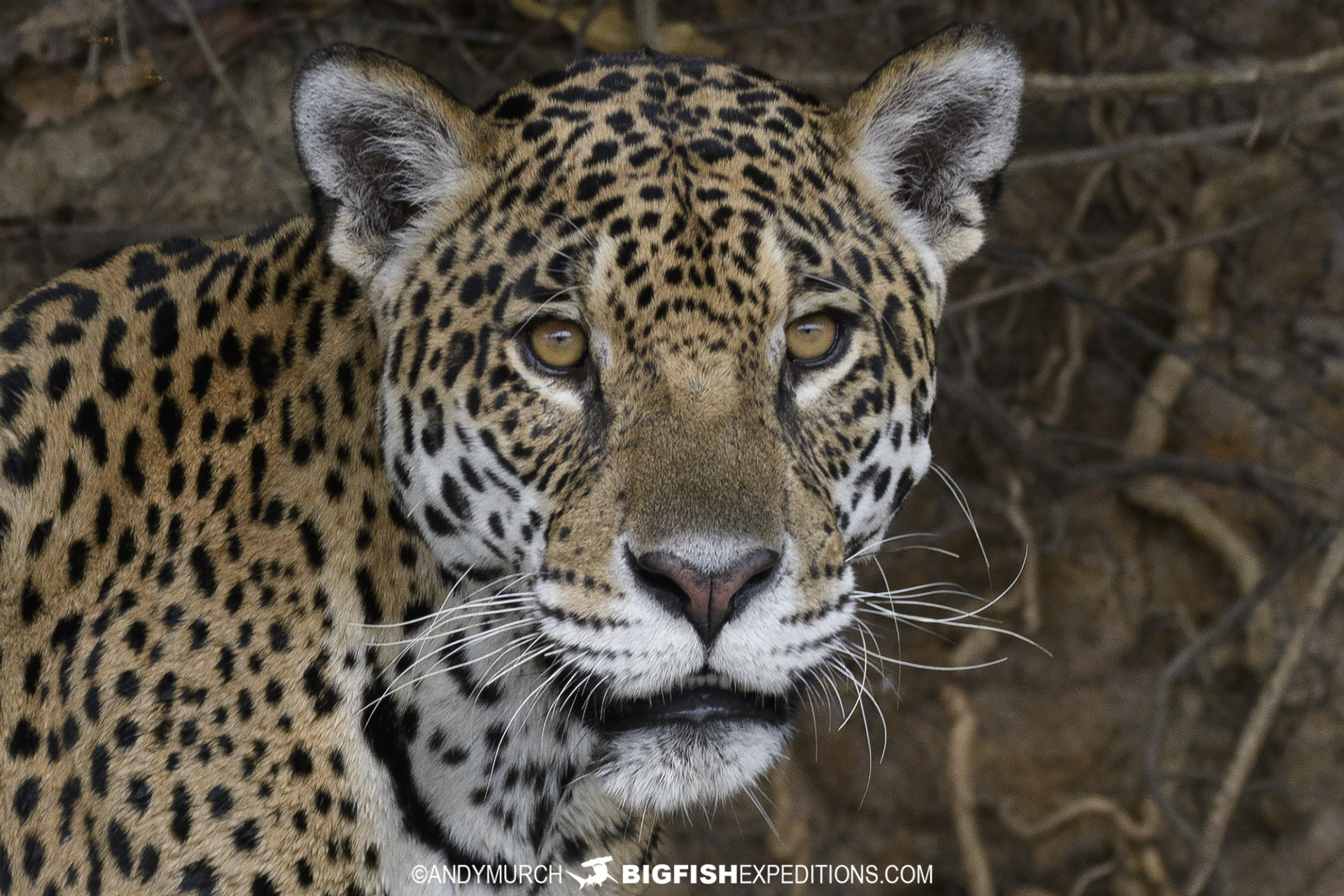
Snake hunter
At one point, Ibaca lept onto a fallen trunk, disturbing a huge Yellow-tailed Cribo Snake which sprang into the river and swam to the far bank at breakneck speed.
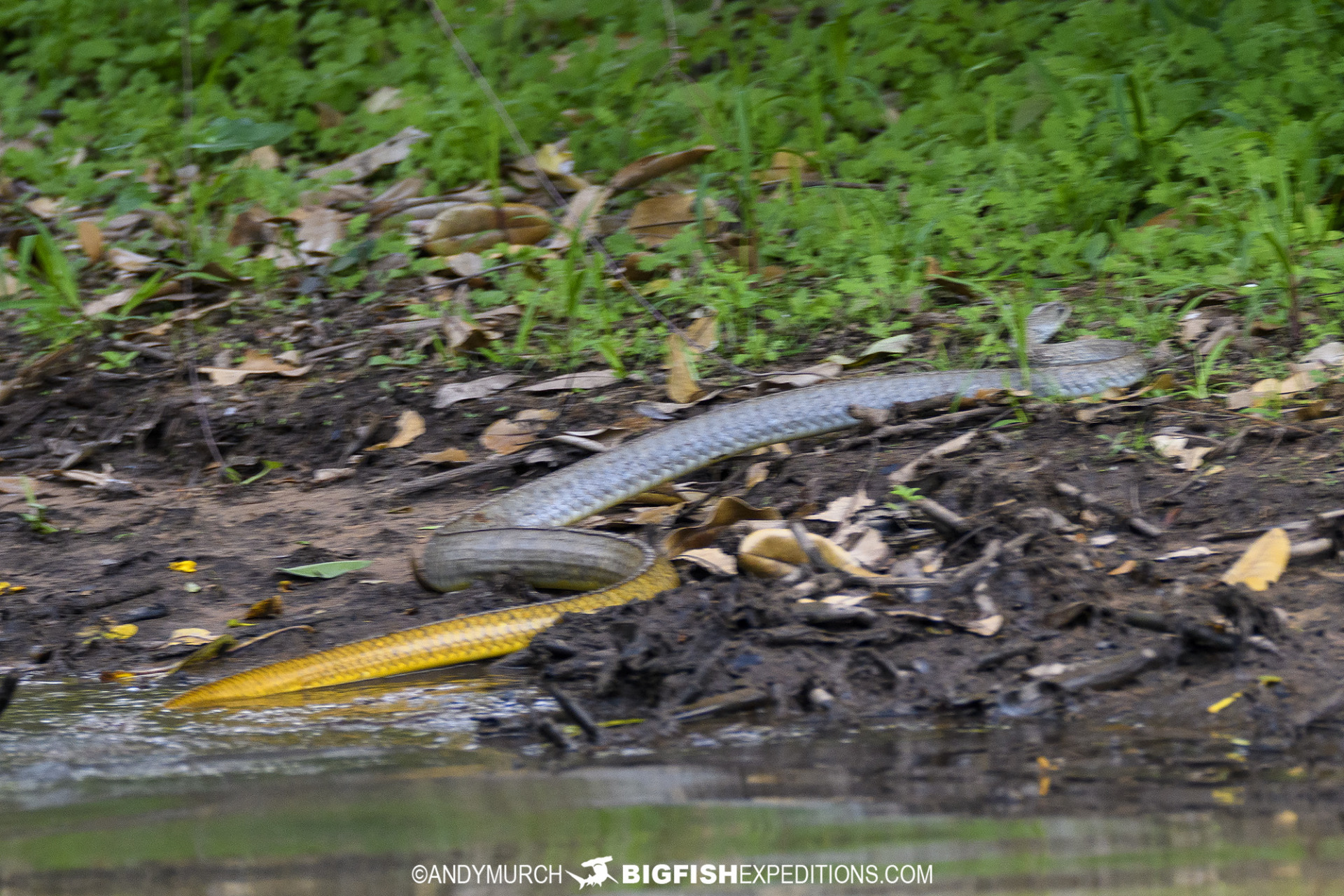
Beautiful Ibaca
We followed Ibaca for more than an hour before she finally slipped into the forest. She was the most striking of all twelve jaguars we had seen over our three days in Porto Jofre.
On the way back to the lodge we photograph more colorful birds, caimans, iguanas, and more but the image of Ibaca hunting along the shore, stayed in my mind far into the evening.
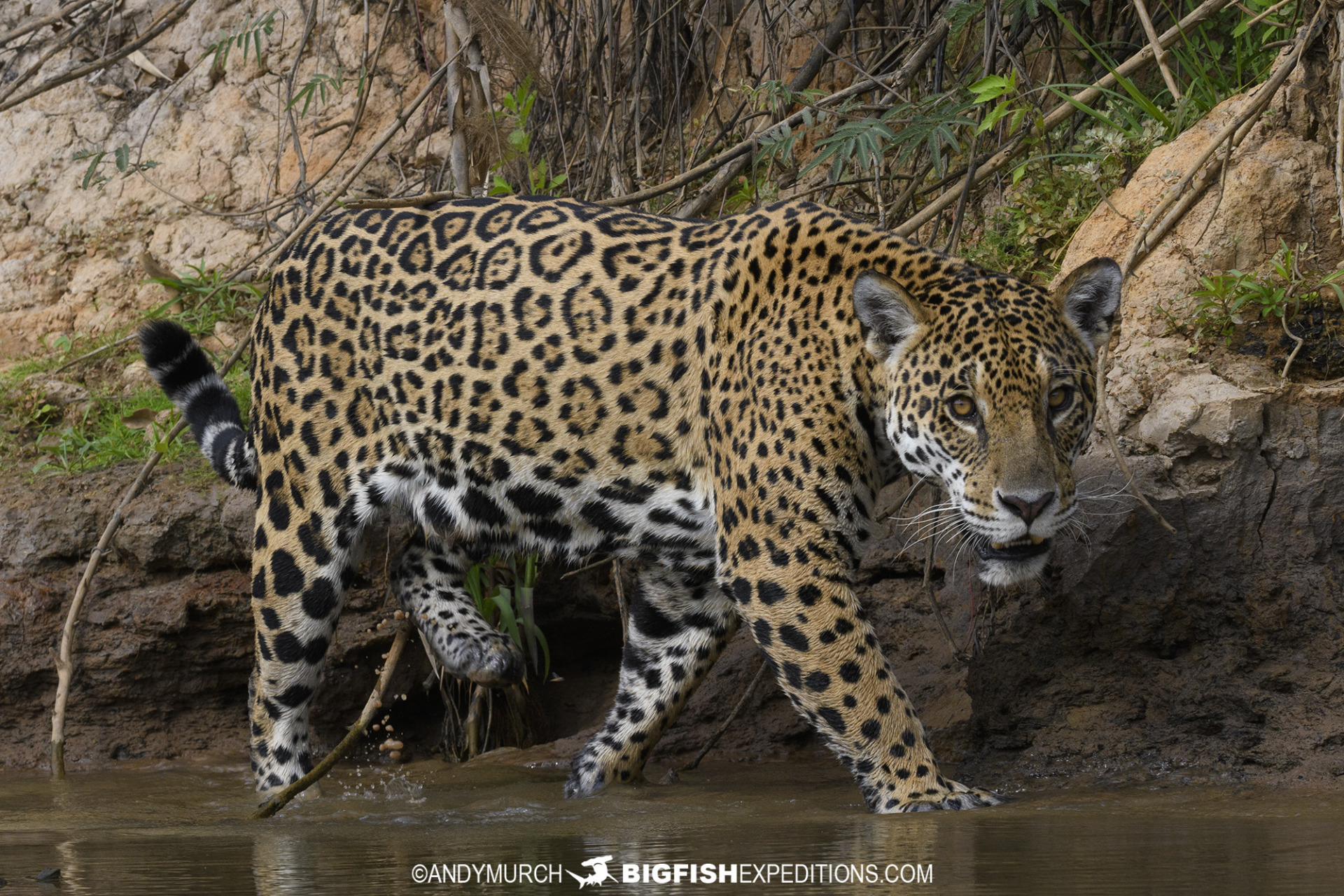
The next morning we left Porto Jofre for the journey home. On route we enjoyed more encounters with exotic birds and animals, but finally we arrived back in the city and the spell of the pantanal was broken.
Next year we will return for another epic adventure with jaguars and ocelots. If you would like to join us, please get in touch: Pantanal Jaguar Photography Safari.
